In deciding between many possible options to travel back to Asia for our summer trip, I had eventually settled upon trying out Japan Airlines business class onboard the Apex Suites they have on their Boeing 787s.
I had previously had a good experience with JAL’s intra-Asia business class, also on the 787, as well as their world-class 777 First Class product, so I was keen to find out how their long-haul business class product would stack up.
Japan Airlines Business Class – Booking
I redeemed 65,000 Alaska miles per person for the itinerary from Chicago to Tokyo Narita. After a stopover in Tokyo, we’d be continuing onto Beijing on the same Alaska itinerary; on top of this, I used Avios to book a nested side-trip to Osaka Itami Airport, effectively “moving” our stopover from Tokyo to Kyoto instead.
Japan Airlines Business Class – Ground Experience
We arrived at Chicago O’Hare Airport via a rather unpleasant but mercifully quick early-morning American Airlines flight from Newark. After collecting our boarding passes and checking in our bags at the Japan Airlines counters in Terminal 3, we spent a few hours relaxing in the American Airlines Flagship Lounge Chicago.
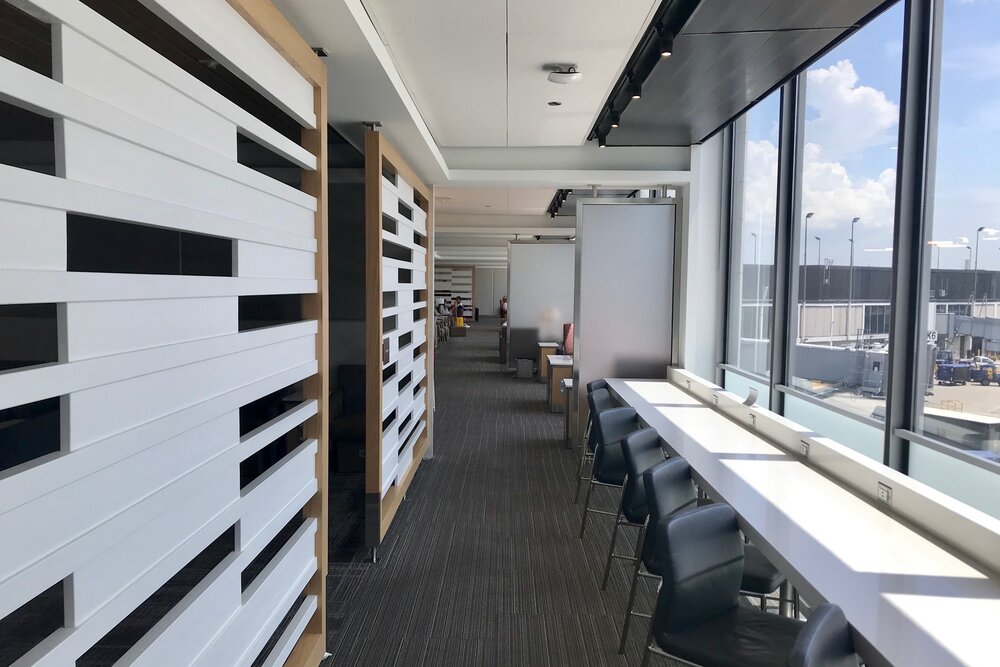
American Airlines Flagship Lounge – Seating
The spacious Flagship Lounge had ample seating, which never quite seemed to fill up too much, at least in the morning period when we visited. The lounge also featured a self-serve buffet spread with a decent variety of items.
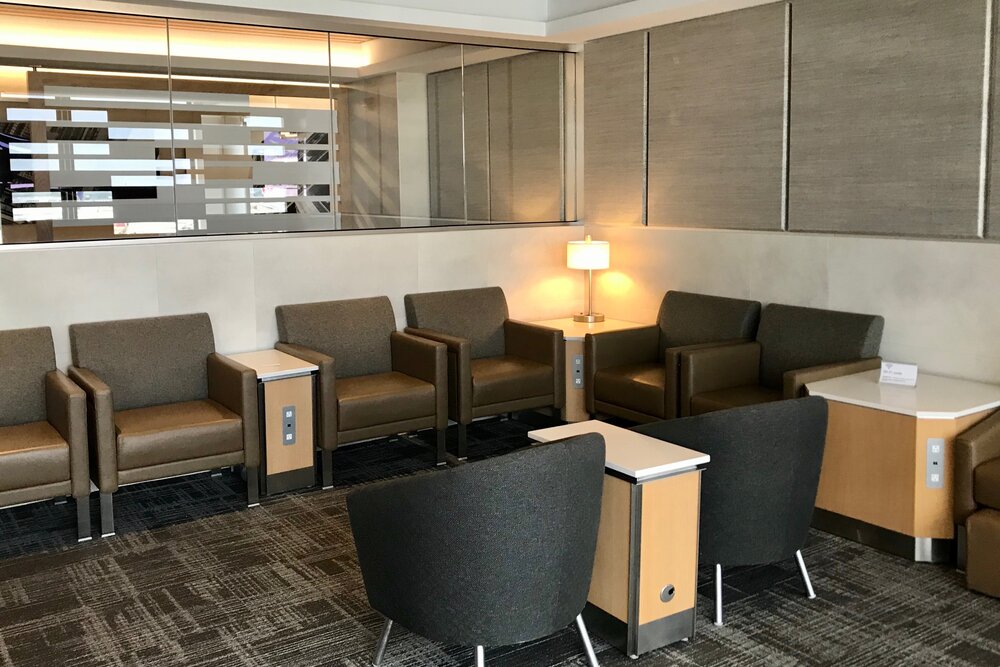
American Airlines Flagship Lounge – Seating
I even decided to take a shower in the lounge prior to the 12-hour flight across the Pacific.
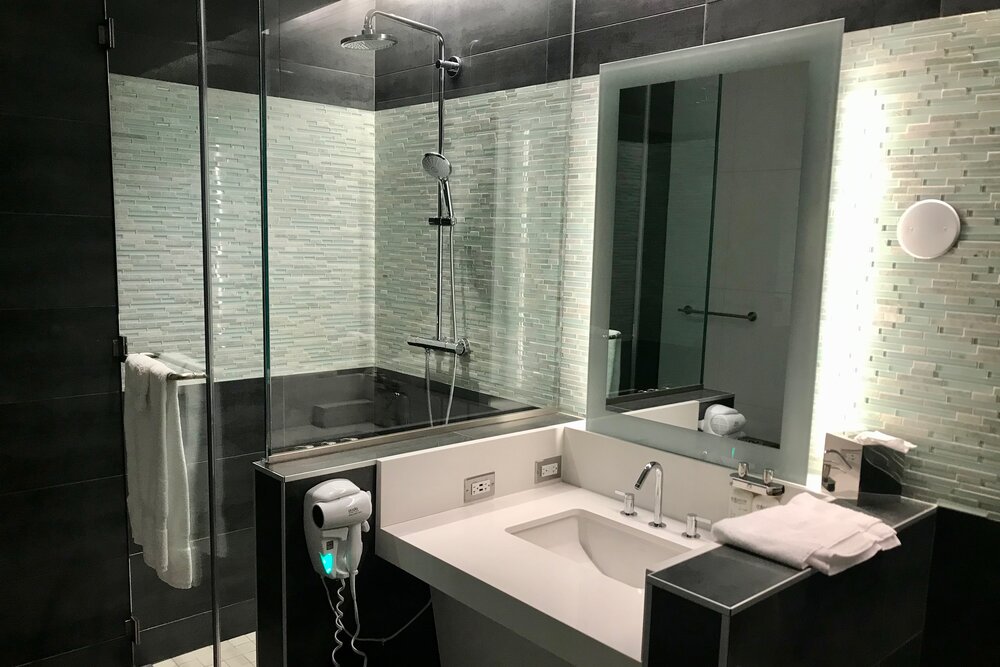
American Airlines Flagship Lounge – Shower
Soon after my shower, it was time to board, so I hurried over to the gate in an effort to board early to take some pictures, whereas Jessy stayed behind and made her way over at a more relaxed pace.
Japan Airlines Business Class – Cabin
I boarded via the door in the second door of the aircraft, and was directed to turn left at the first aisle to make my way over to Seat 1A.
Among the Boeing 787 Dreamliner family, Japan Airlines operates both the 787-8 and the 787-9 variants, and this particular flight was operated by a smaller-capacity 787-8. Even among 787-8s, the airline has a few different seating configurations, and our flight featured 30 business class seats, divided across a main cabin (with 18 seats) and a mini-cabin (with 12 seats).
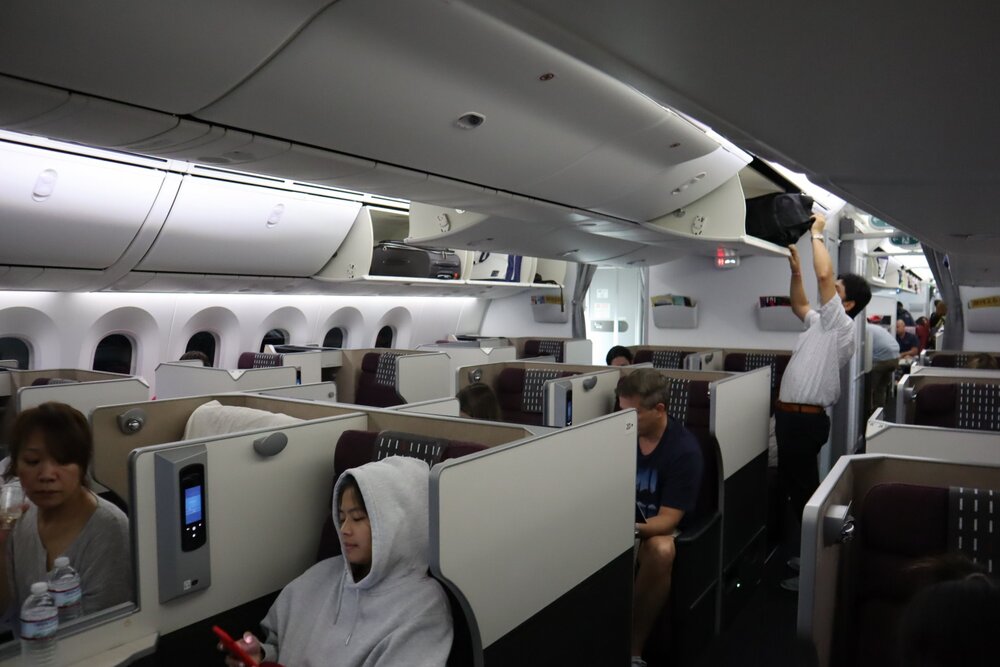
Japan Airlines business class – Cabin
The seat type is known as the Apex Suites, and these seats are known particularly for their extremely private window seats (the “A” and “K” seats). Even though there are two seats along the windows, the seat closest to the window is accessed via a private walkway at the front of the seat closer to the aisle, so there’s no need to bother your seatmate to get out of your seat.
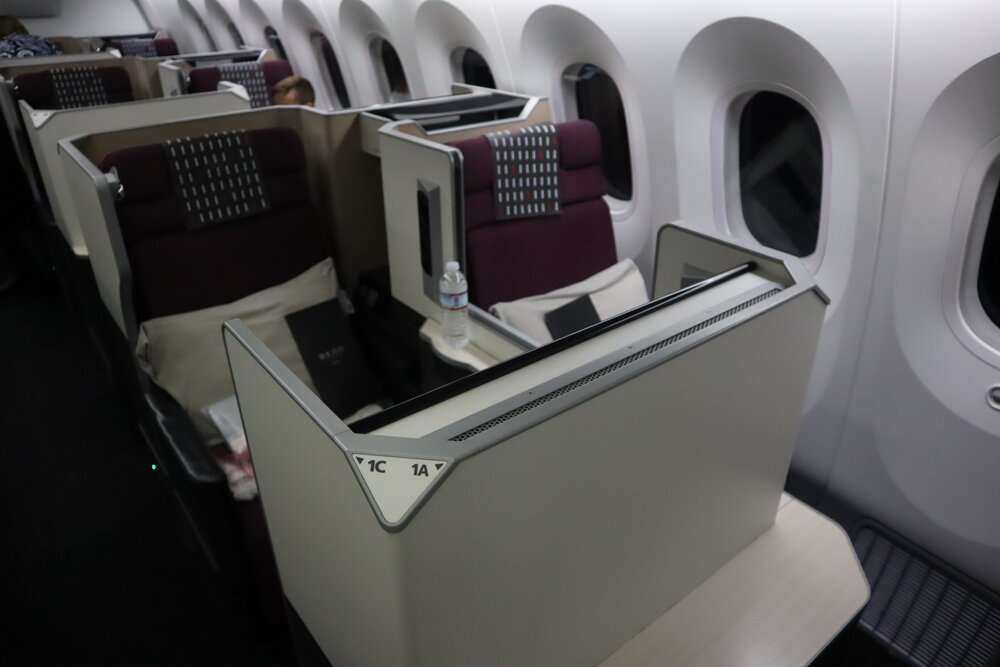
Japan Airlines business class – Seats 1A and 1C
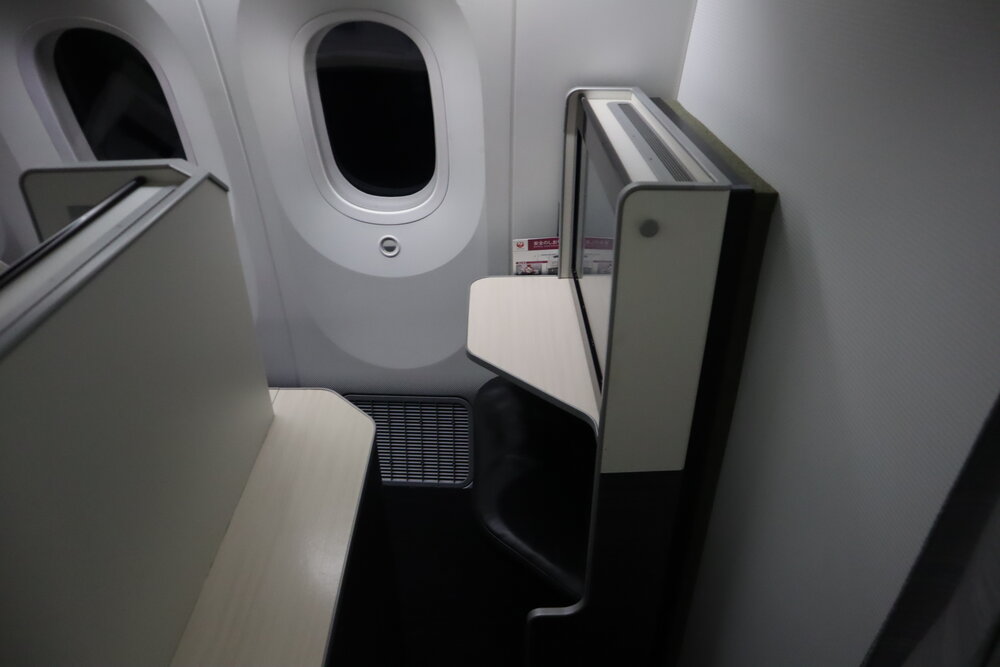
Japan Airlines business class – Window seat private walkway
Indeed, if you were to lift up the privacy divider between the two seats, you’d be blocked-off from the rest of the cabin on all three sides, and you’d have a level of privacy that no other business class product could match.
Naturally, I had selected Seat 1A for myself, with Seat 1C next to me designated for Jessy. (And hey, to be fair, I had let Jessy have the better seat the previous time we flew this product on a regional flight.)
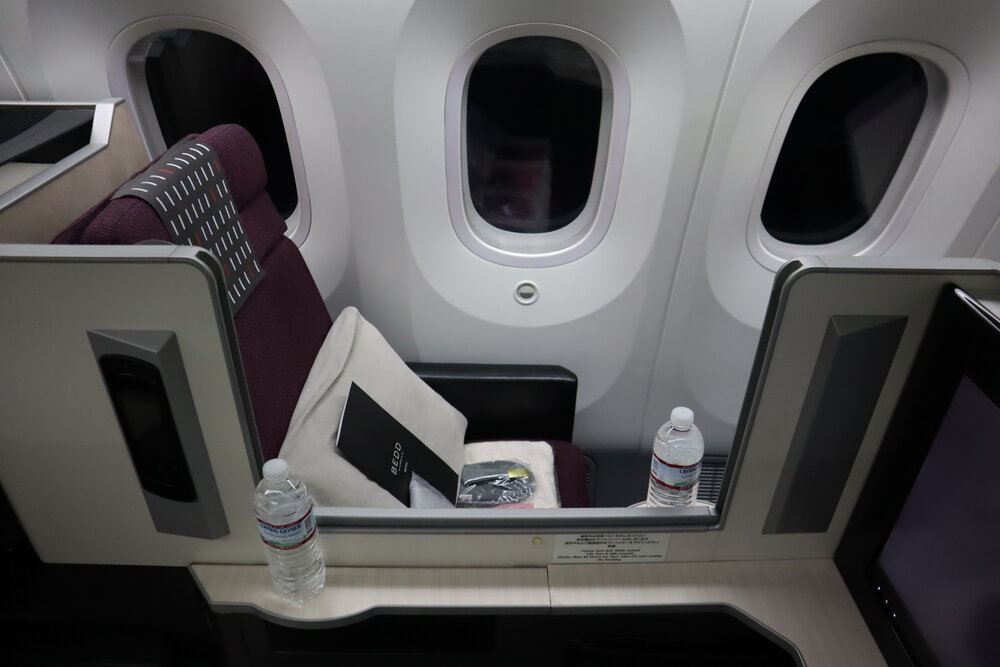
Japan Airlines business class – Seat 1A

Japan Airlines business class – Seat 1A
As for the aisle seats (both the “C” and “H” seats adjacent to the window seats, and the “D” and “G” middle seats in each row themselves), there’s nothing wrong with them per se – they’re simply standard forward-facing lie-flat seats that all feature direct aisle access – but they certainly do feel rather exposed to the aisle compared to the ultra-private window seats.
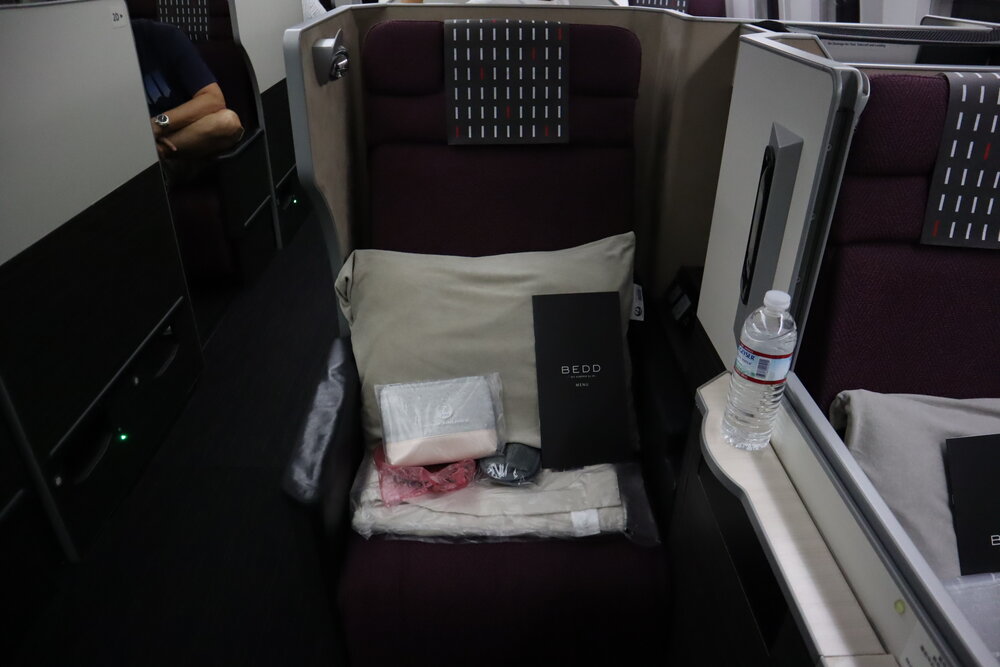
Japan Airlines business class – Seat 1C
I do love the burgundy finishes on the seats, as well as the red and white accent lines on a black background that Japan Airlines uses as its business class motif.
Japan Airlines Business Class – Seat
Let’s take a look at the seat features. The Apex Suites are longer and thinner compared to many of its rival products, so the entertainment screen is positioned rather far away at the very end of the suite. A small shelf juts out from beneath the entertainment screen just far enough to put your drink glass (but no so far as to encroach on your private walkway).
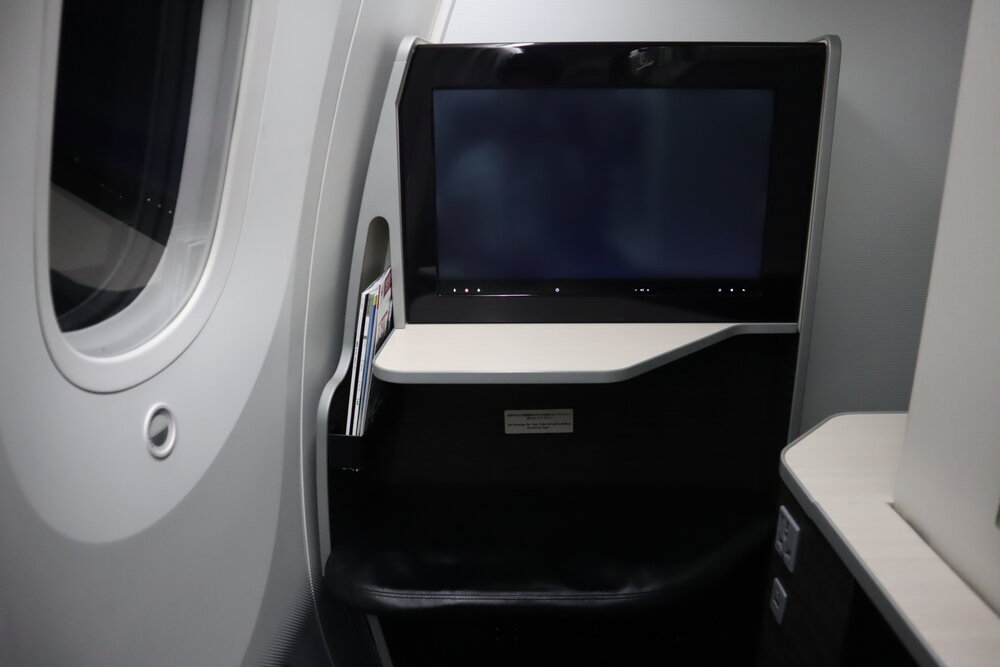
Japan Airlines business class – Entertainment screen
Meanwhile, the literature pocket occupies the gap between the seat shell and the aircraft fuselage, a small ottoman (which becomes part of the bed in lie-flat mode) takes up some space underneath the shelf.
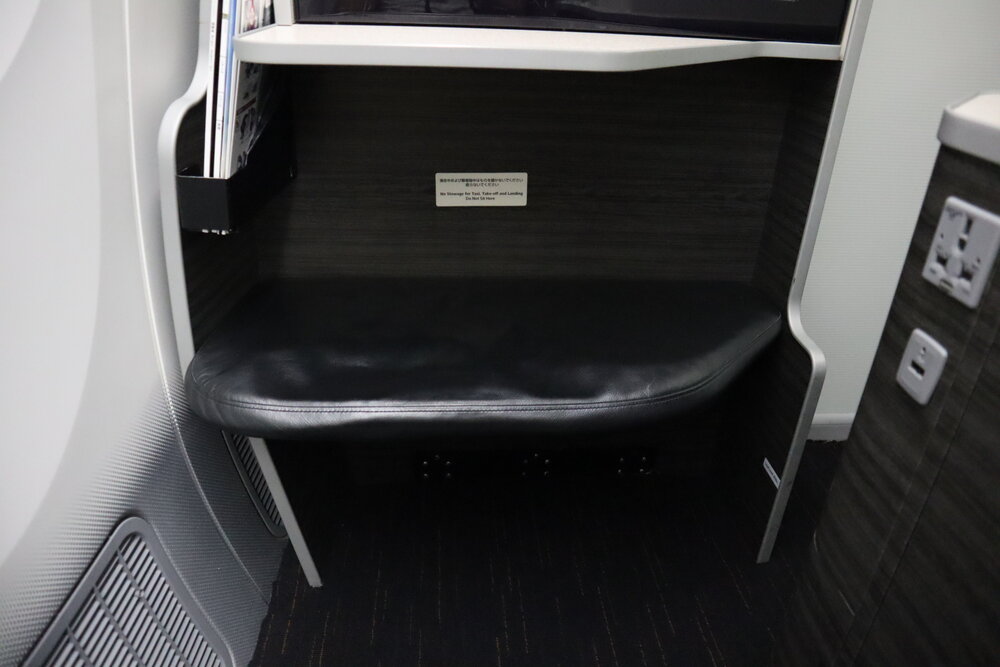
Japan Airlines business class – Ottoman
A little closer to you, you have the entertainment controller mounted against the side wall, above the power port and USB charging outlet.
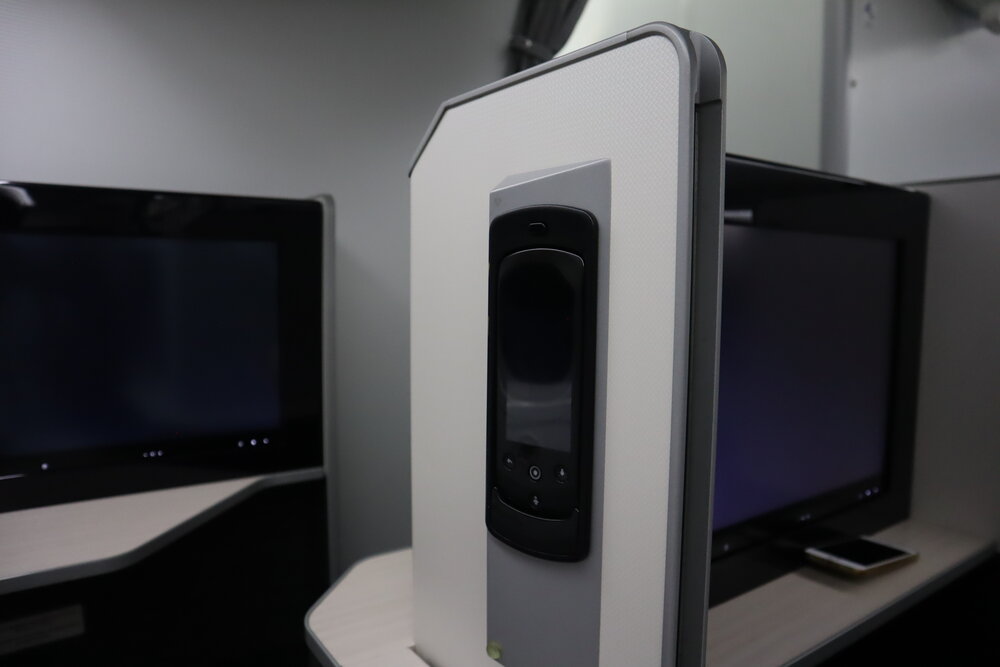
Japan Airlines business class – Entertainment controller
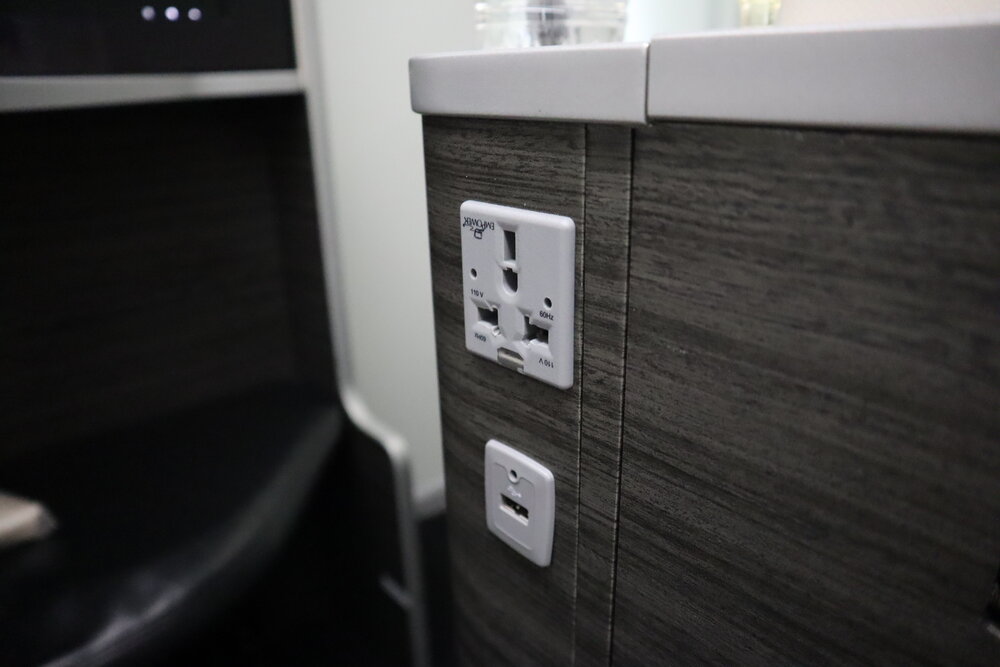
Japan Airlines business class – Power and USB ports
It’s worth noting that the entertainment screen on JAL business class can only be navigated via the controller – it’s not a touch-screen monitor, so even if you could reach out far enough towards the screen, you wouldn’t be able to control anything without using the handheld device.
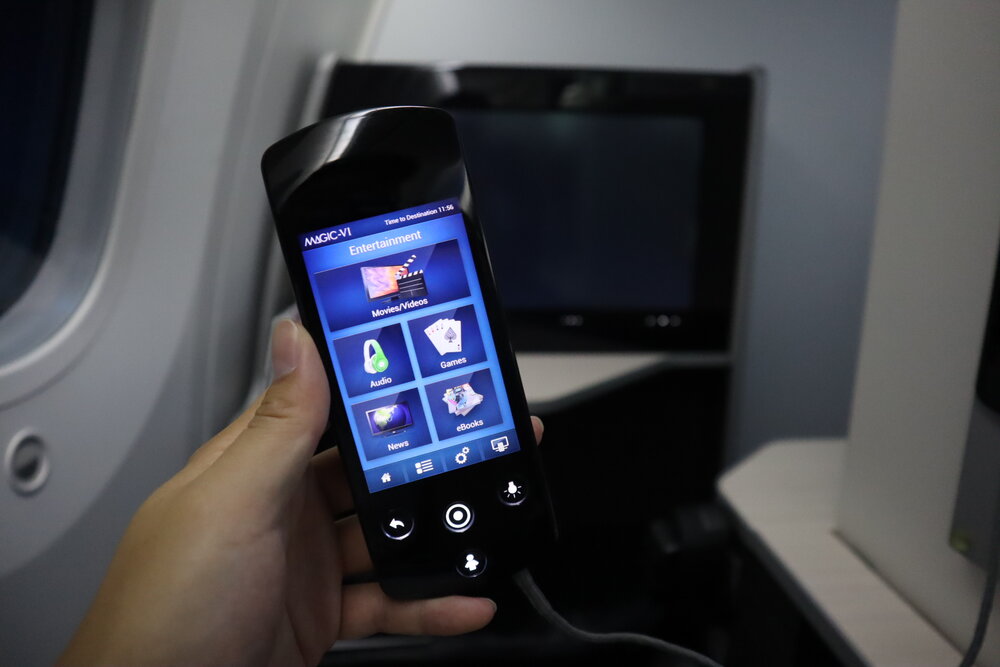
Japan Airlines business class – Entertainment controller
Then there’s the tray table, which pops out of its holder along the side of the seat and slams down into position in front of you.
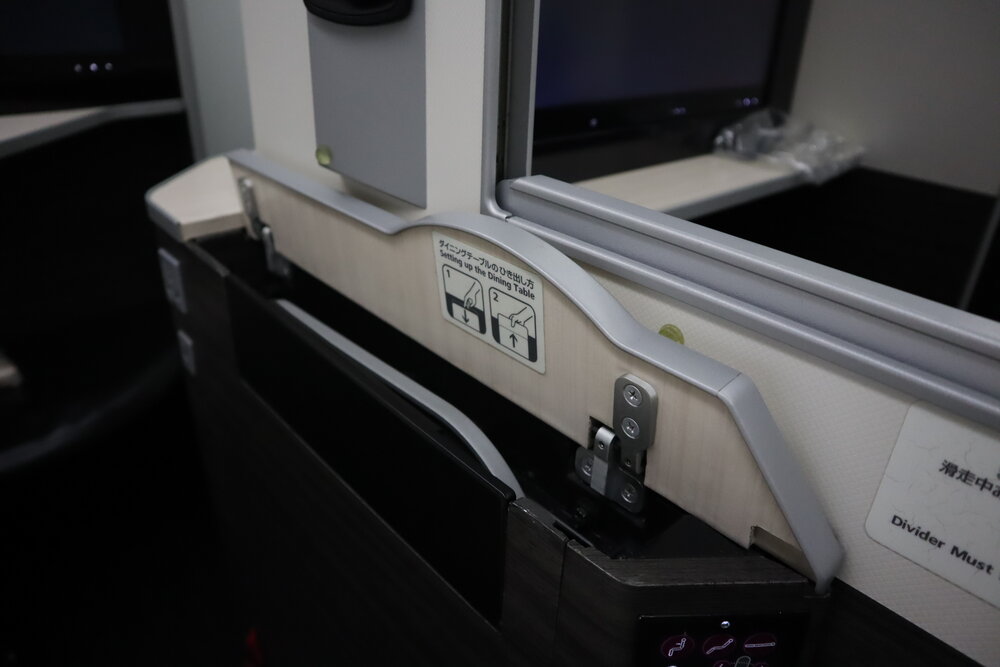
Japan Airlines business class – Tray table

Japan Airlines business class – Tray table
Just underneath the tray table holder was the electronic seat control panel, which offered a good amount of customizability for the seat, even if the buttons were starting to get a little worn-out.

Japan Airlines business class – Seat controls
One of the buttons here is used to raise and lower the privacy partition. As you can see, with the partition raised, the rest of the business class cabin vanishes from your view, and your window seat basically transforms into your own private cocoon.
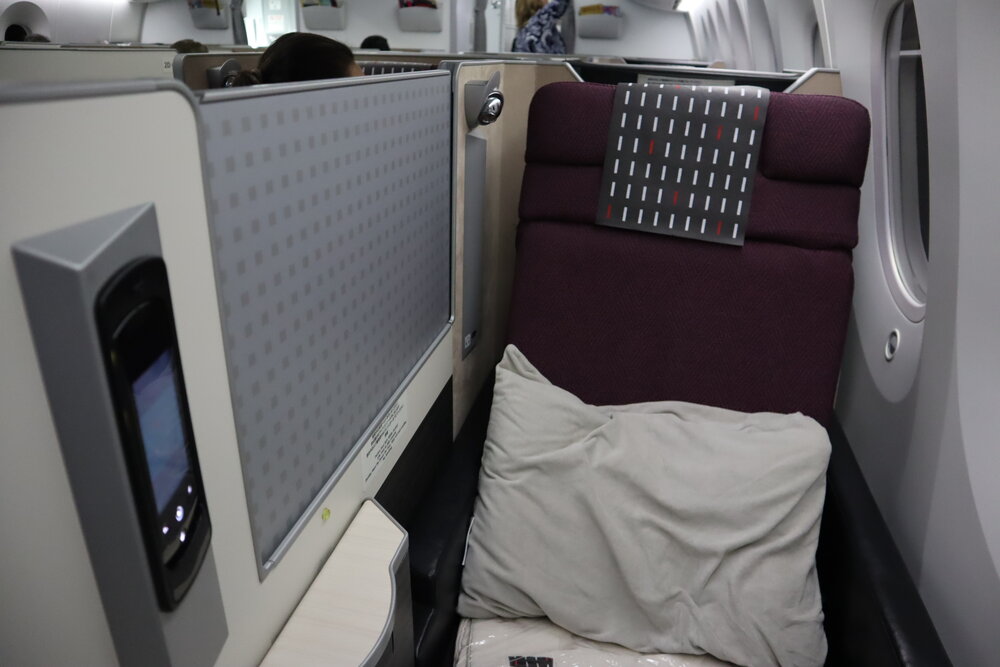
Japan Airlines business class – Privacy partition
Finally, the reading light is mounted on the upper part of the wall by your shoulder, and can be fine-tuned to several different degrees of brightness.

Japan Airlines business class – Reading light
Compared to the window seats, the seats directly against the aisle are mostly the same, although there are a few differences due to the nature of the overall configuration.
Since the window seats jut in front of their adjacent aisle-side seats slightly, the space behind the window seats becomes a small storage unit for the aisle-side seats immediately next to them (i.e., the “C” and “H” seats).

Japan Airlines business class – Seat 1C storage compartment
Meanwhile, the two aisle seats down the middle (i.e., the “D” and “G” seats) don’t have this small storage unit, since obviously there’s no seat next to them jutting forwards ever-so-slightly. Therefore, if all of the ideal window seats were already occupied and you had to choose between a “C” or “H” seat, and a “D” or “G” seat, I’d recommend the former.
Japan Airlines Business Class – Amenities
All of the business class amenities – the pillow, blanket, menu, amenity kit, slippers, and headphones – were already waiting at our seats, rather than being distributed by the crew after boarding. It’s my understanding that airlines often reduce the crew members’ workload when departing from outstations as a cost-control measure, so this may well be different if were a flight departing from Tokyo rather than heading into it.
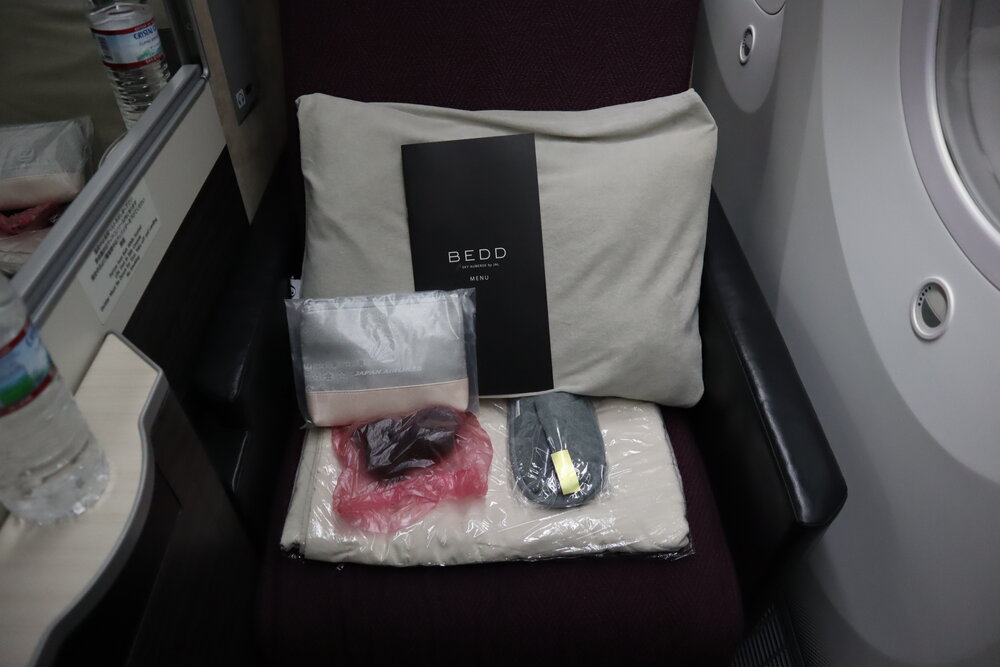
Japan Airlines business class – In-seat amenities
The crew came around to hand out the welcome beverages, and I chose the sparkling wine over the water and orange juice.

Japan Airlines business class – Welcome champagne
I then spent the rest of the time before takeoff looking through the amenities that had been left at my seat. There was the blanket, which featured that modern and minimalist JAL business class motif.

Japan Airlines business class – Blanket
The amenity kit featured some of the usual amenity kit items, like a dental kit, earplugs, and lip balm, but also a few quirkier Japanese items like a moisture mask and a gentle steam eye mask.
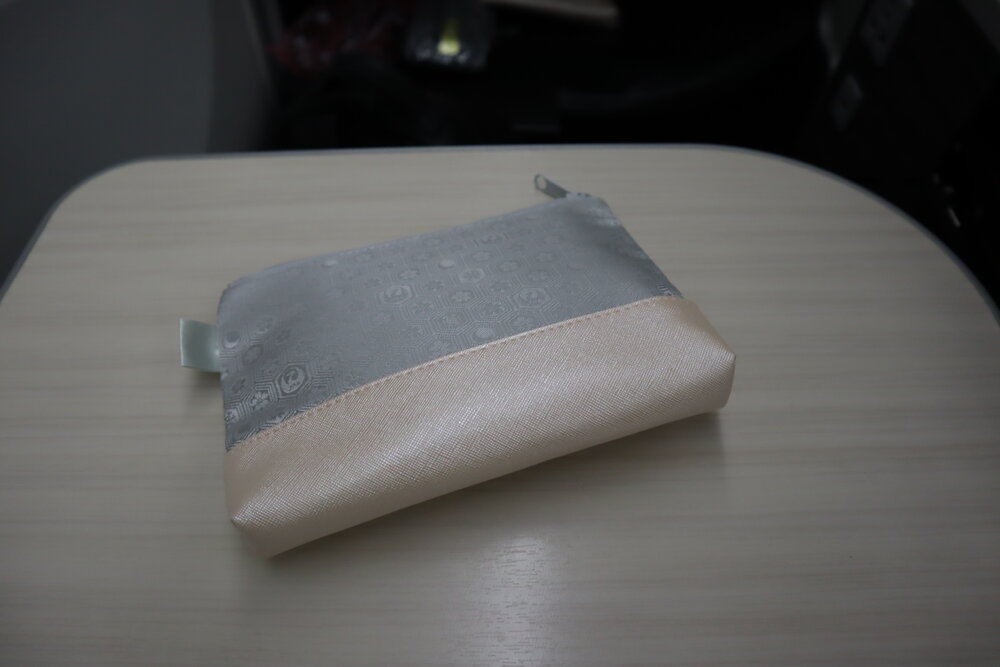
Japan Airlines business class – Amenity kit
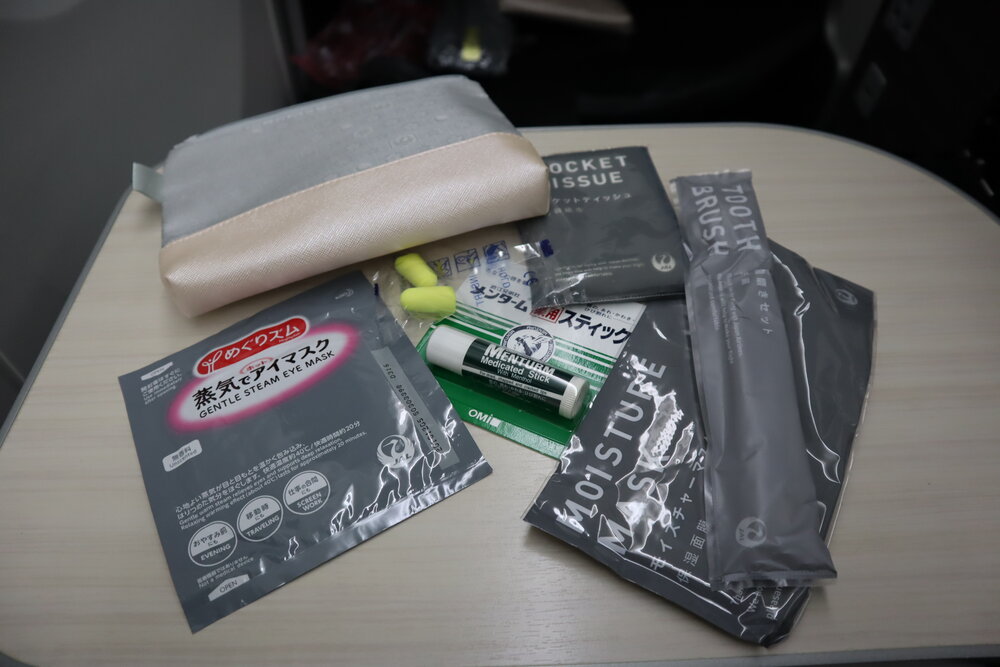
Japan Airlines business class – Amenity kit contents
The kit wasn’t produced in association with any particular skincare brand, as far as I could tell, so if you’re someone who likes collecting fancy amenity kits then you might be a little disappointed with this one.
Then there were the slippers, which I changed into shortly after taking my seat, as well as the headphones, which I didn’t get to trying out on this flight.
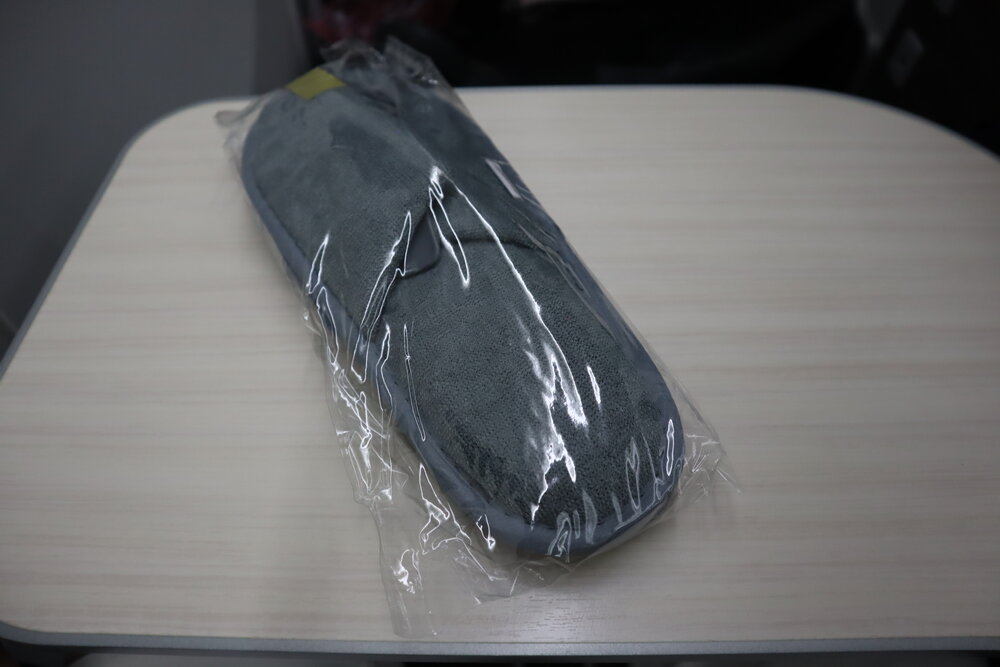
Japan Airlines business class – Slippers
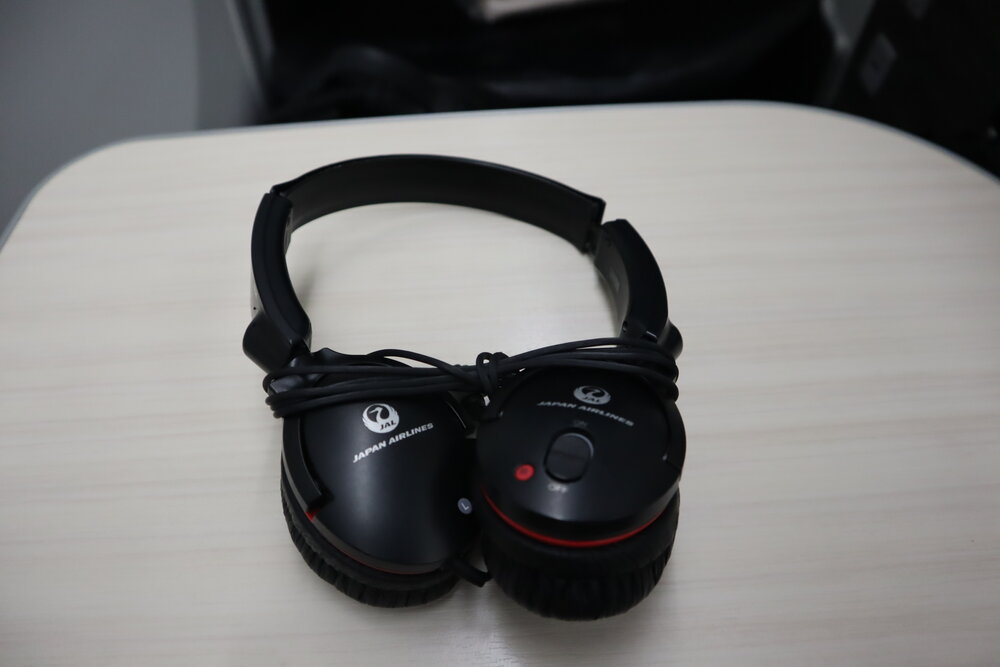
Japan Airlines business class – Headphones
Japan Airlines’s business class dining concept is known as “BEDD: Sky Auberge by JAL”, with BEDD apparently standing for “bed, dining, delicious and dream”.
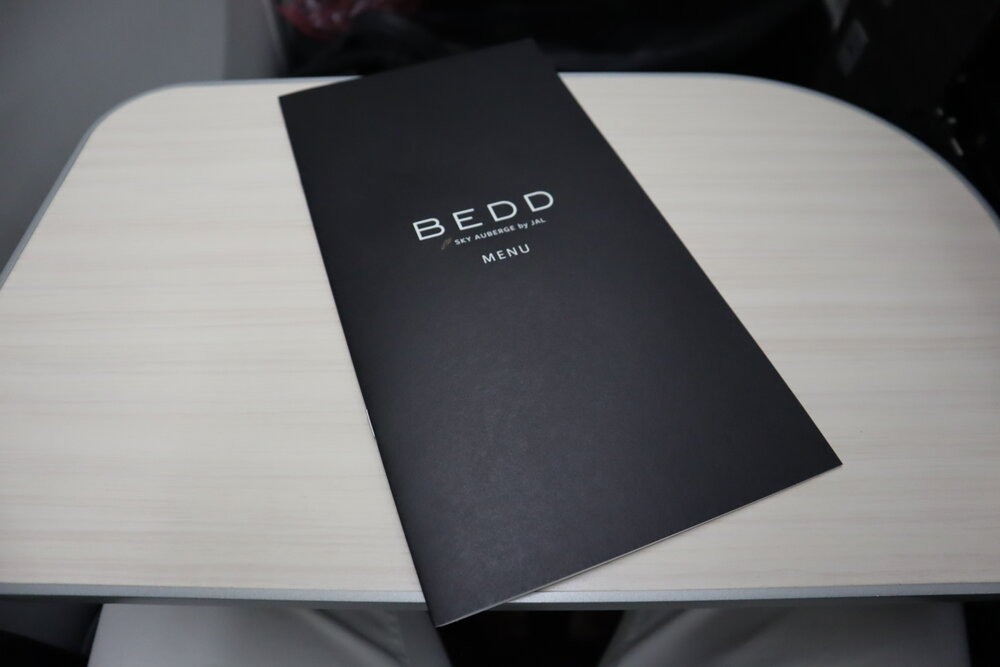
Japan Airlines business class – Menu
Like many other instances of Japanese branding drawing upon English words, I can’t help but find the end-product somewhat coherent but just a little bit confusing.
Anyway, the BEDD menu read as follows, and I paid particular attention to the snack menu as I perused it. Since this would be a daytime flight, I intended to stay awake for a good chunk of it, and sampling items from the snack menu sounded like a great way to keep myself entertained.
Soon after boarding was completed, the flight attendant came by our seats to take our meal orders. Thinking back to my fond memories of the Japanese meal onboard JAL First Class, it simply wasn’t a question for me: I selected the Japanese lunch over the Western one without a moment’s hesitation.
The safety video began playing as we taxied across the runway, and the flight attendants came around to collect our drink glasses before takeoff.
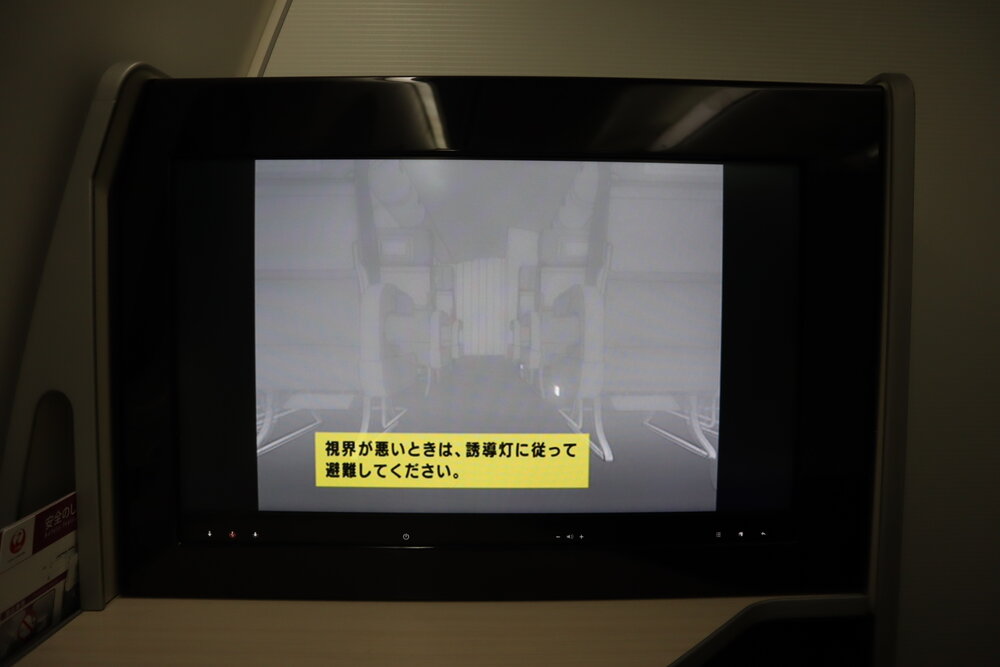
Japan Airlines business class – Safety video
It was also at this point that I clicked the electronic window shade buttons on the Boeing 787 Dreamliner, and realized that, for some reason, the windows had actually been dimmed all the way the whole time we were parked by the gate.
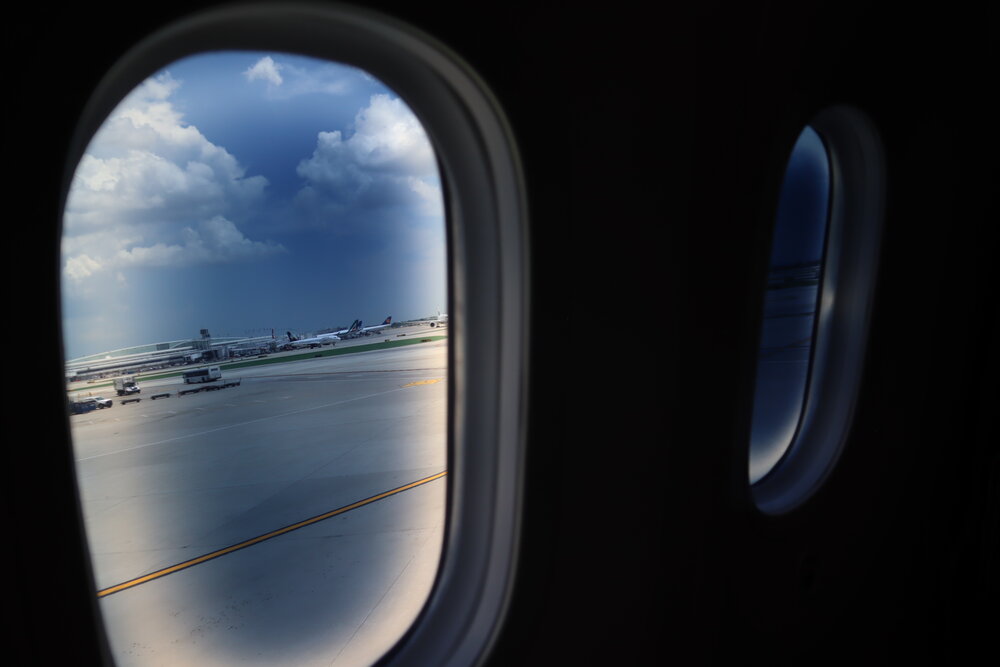
Japan Airlines business class – Window view
The Dreamliner’s window shades have five different settings of “brightness”, and on this flight, rather annoyingly, they seemed to be set to total darkness by default. Throughout the flight, I would try to switch them up to the second or first level of brightness, but then after a few minutes they’d slowly dim themselves back into darkness again.
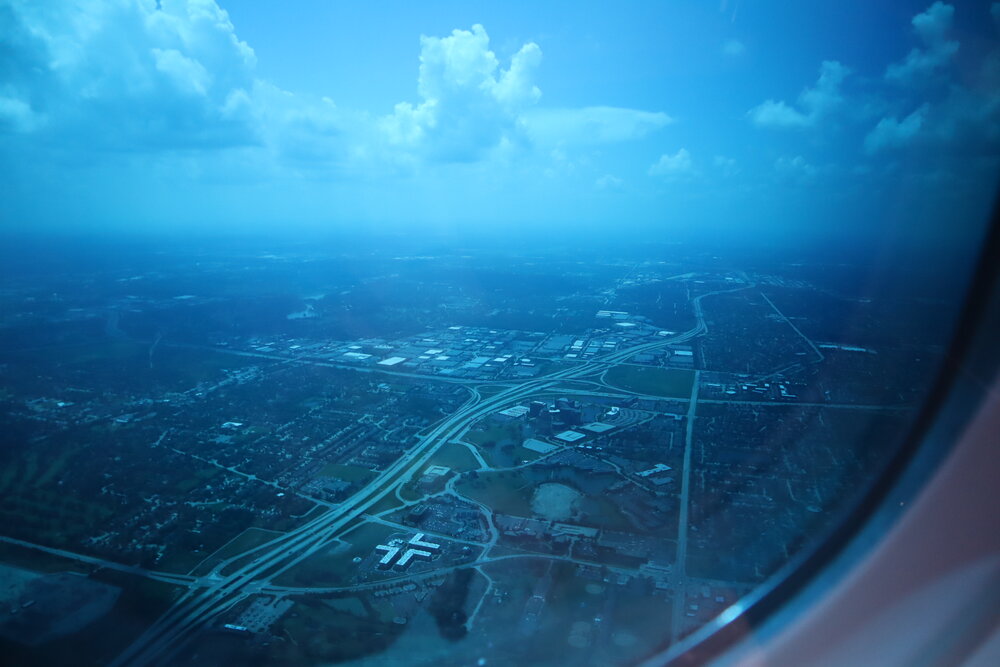
Japan Airlines business class – Views upon takeoff from Chicago
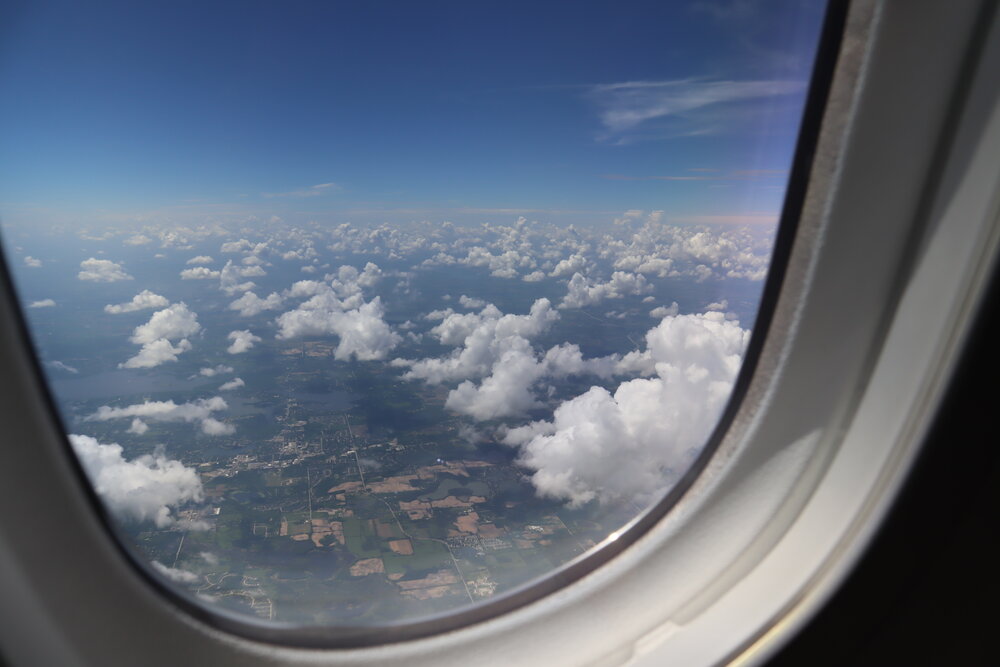
Japan Airlines business class – Views upon takeoff from Chicago
After trying unsuccessfully a few times to keep the windows “open” after we were airborne, I eventually gave up and just let them do their thing.
Japan Airlines Business Class – Meal Service
There would be two meals served onboard this flight (excluding snack items!), and the first meal service commenced about 30 minutes after we were airborne, beginning with hot towel service.
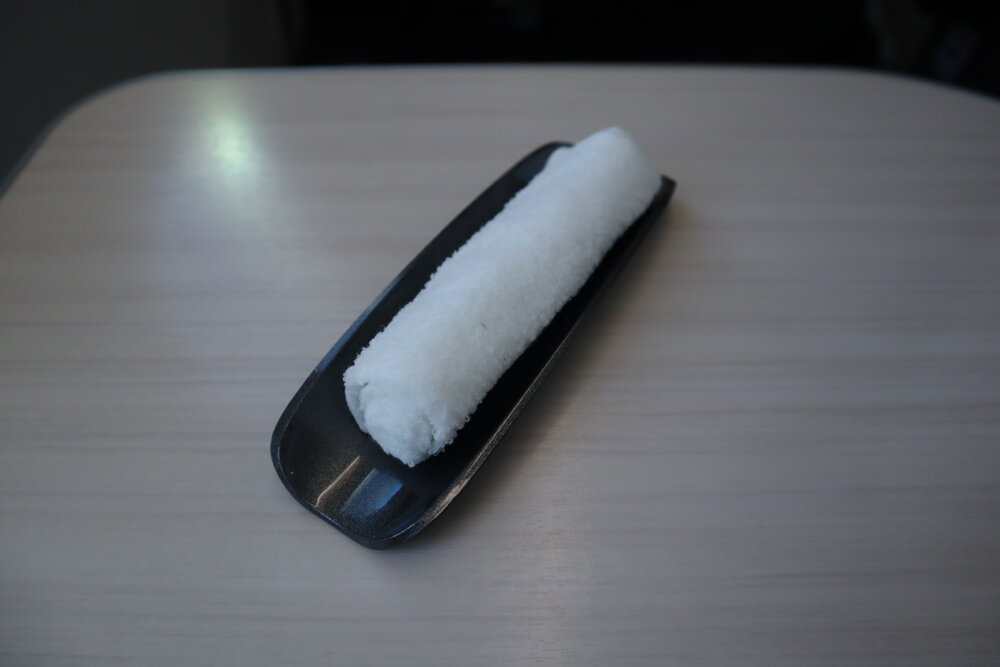
Japan Airlines business class – Hot towel
My table was set with a cloth that again featured that JAL business class motif. I gotta say, dedicated motifs like these are normally reserved for First Class products, so Japan Airlines does a great job of differentiating its business class offering simply by adding this simple design touch.
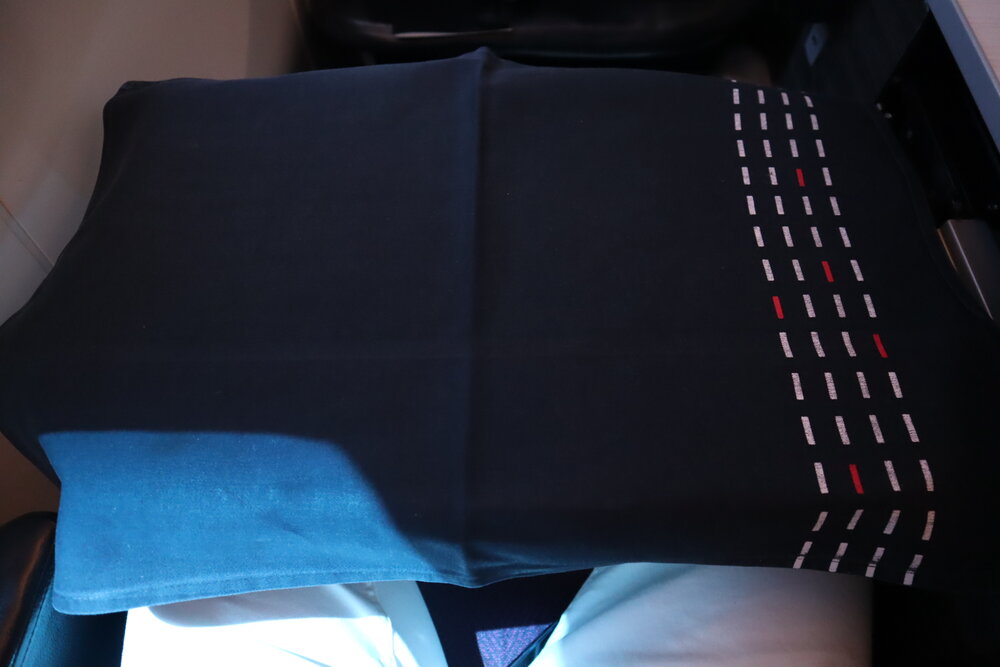
Japan Airlines business class – Table setting
I was first offered something to drink, and I chose the Piper Heidsieck champagne, and the flight attendant started me off with a generous portion.
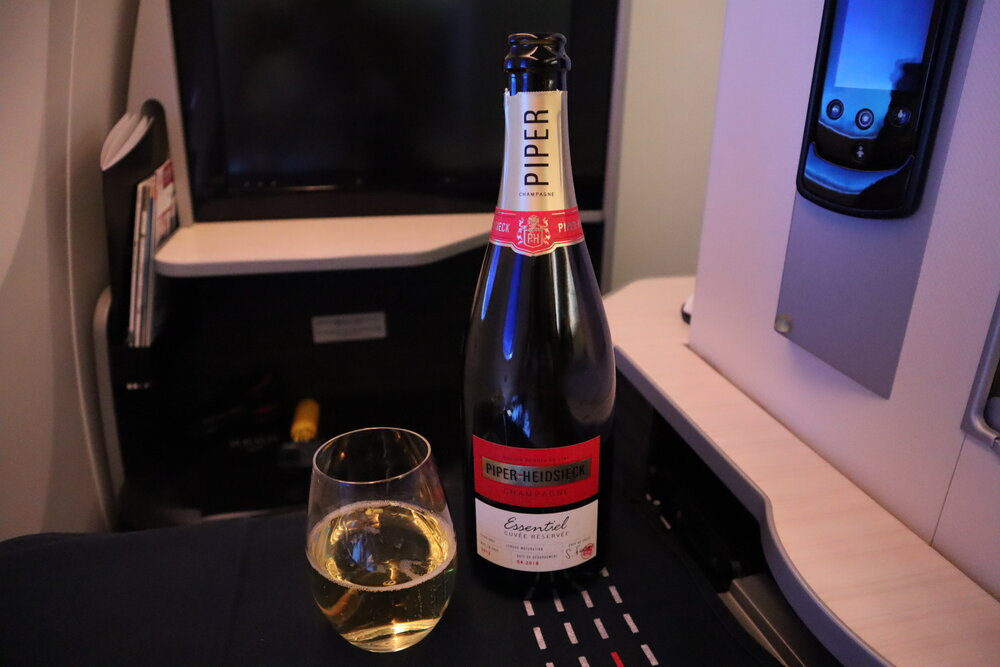
Japan Airlines business class – Champagne
The amuse-bouches – a small prawn cocktail and some chilled corn chowder – were served at the same time. The texture of the prawns were quite hard, presumably having been left out for longer than they should’ve been, but both morsels were quite tasty nonetheless.
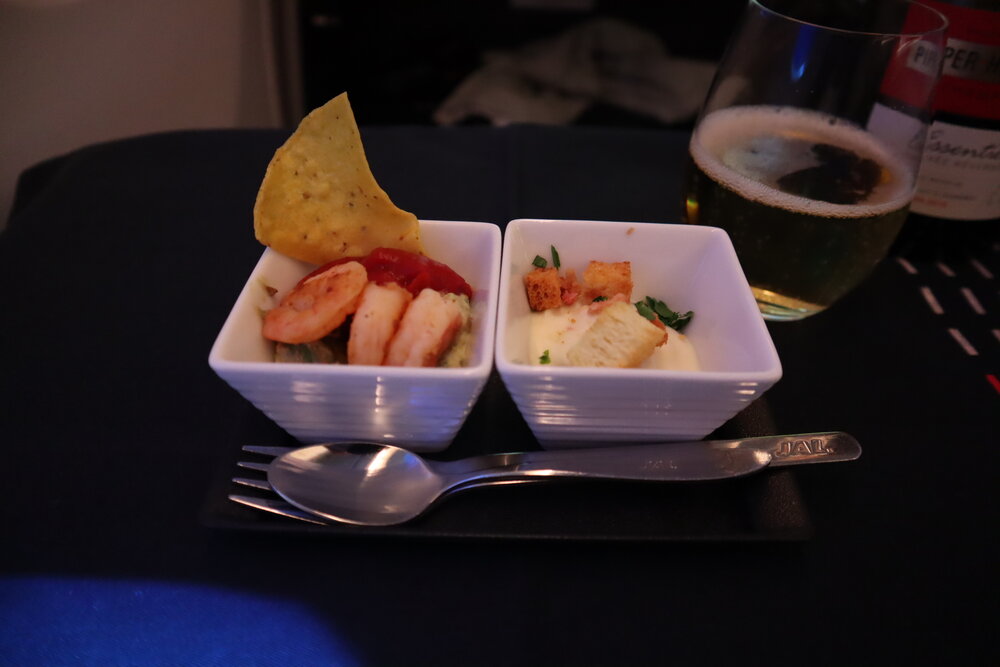
Japan Airlines business class – Amuse bouche
Then came the picture-perfect irodori gozen bento box-style appetizer. I went around the box, sampling a few bites from each mini-portion one at a time.
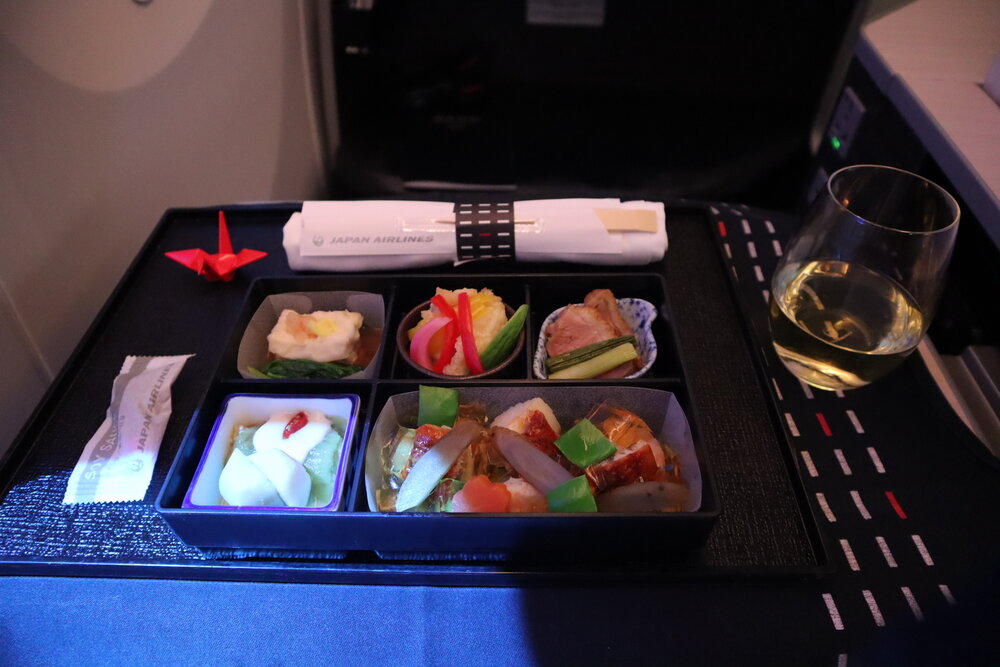
Japan Airlines business class – Bento box appetizer
The duck breast (top right hand corner) was excellent, and the fried halibut (top, middle) was very flavourful as well. Meanwhile, I thought the tofu (top left) was unspectacular, whereas the “seafood and vegetables” (bottom right) ended up being mostly vegetables.
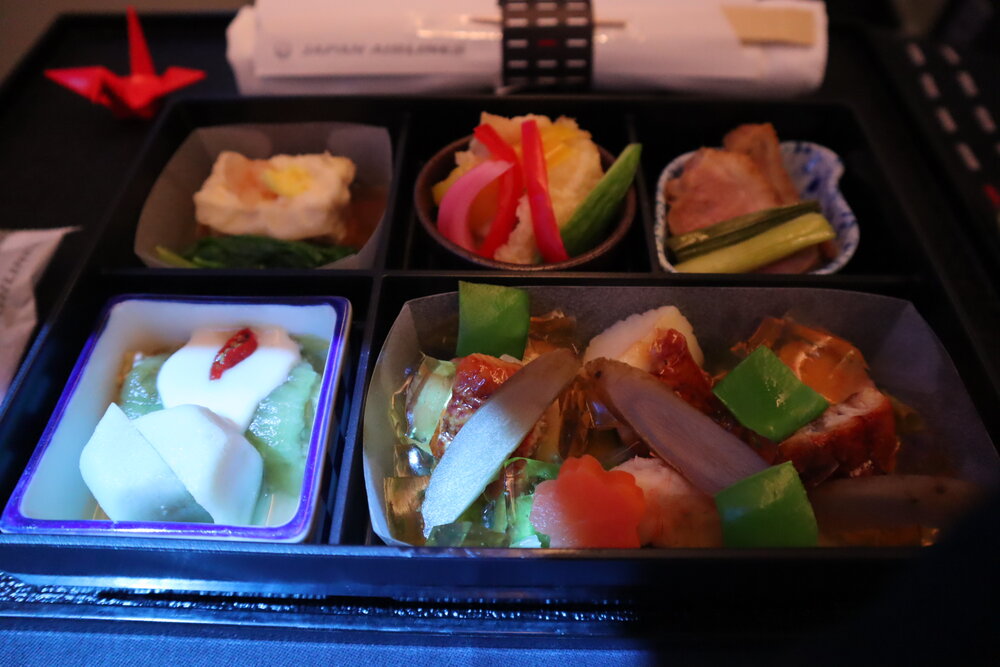
Japan Airlines business class – Bento box appetizer
Rather unexpectedly, my favourite out of these appetizers was the taro & broiled eggplant dish (bottom left), a vegetarian portion that was outstanding.
After the appetizers came the dainomono, or the main course. Here we had a braised pork dish alongside some sea bass in pickled plum sauce, served in an elegant presentation with rice and miso soup.
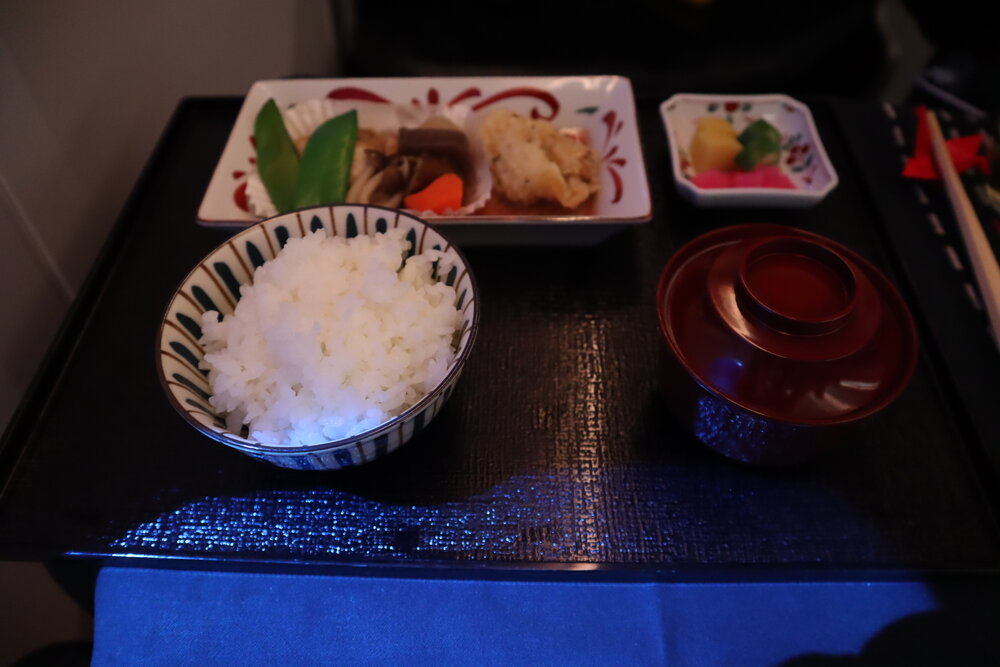
Japan Airlines business class – Main course
I was impressed by the pork’s tenderness and fattiness, along with the miso soup’s rich, deep flavour; however, I found the sea bass’s plum sauce to be too sour, and needed quite a bit of rice to go along with each bite.
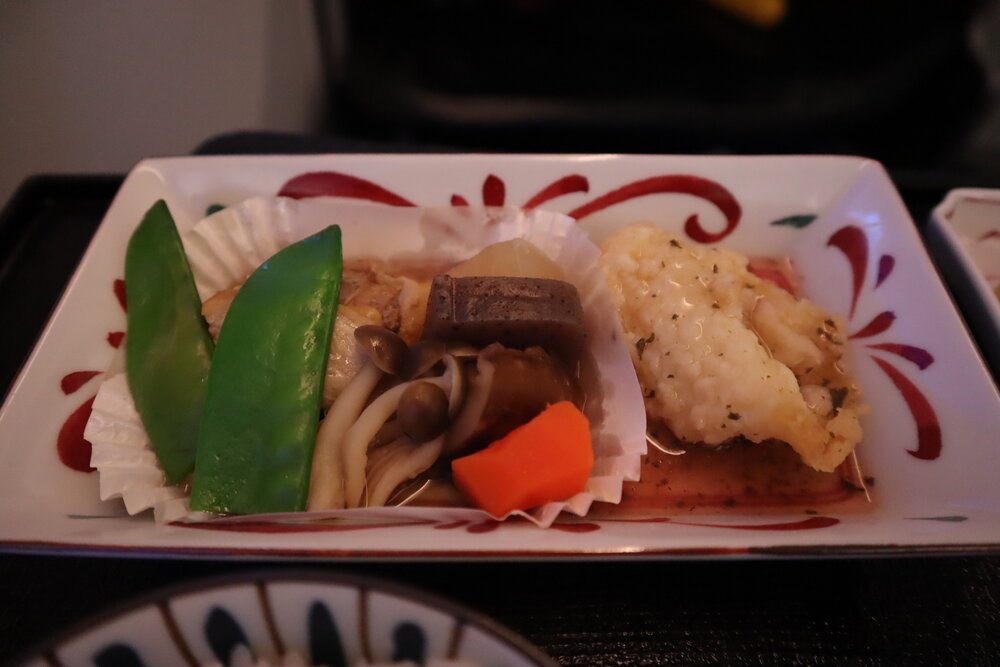
Japan Airlines business class – Braised pork and sea bass
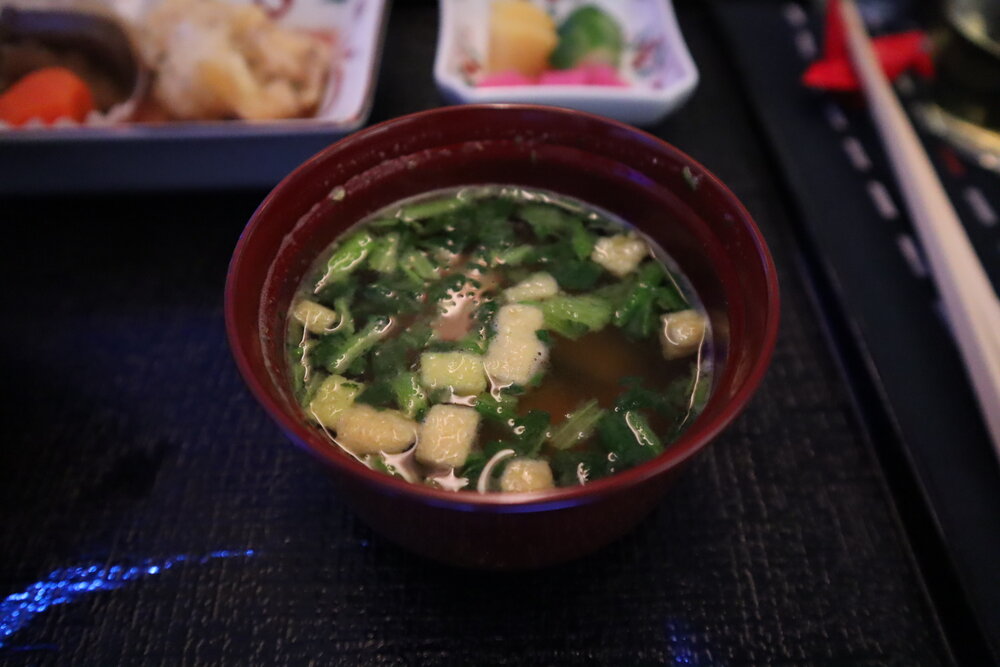
Japan Airlines business class – Miso soup
Finally, a dessert of lychee pudding with green tea, and even though the flavour was entirely new to me, I still very much enjoyed it.
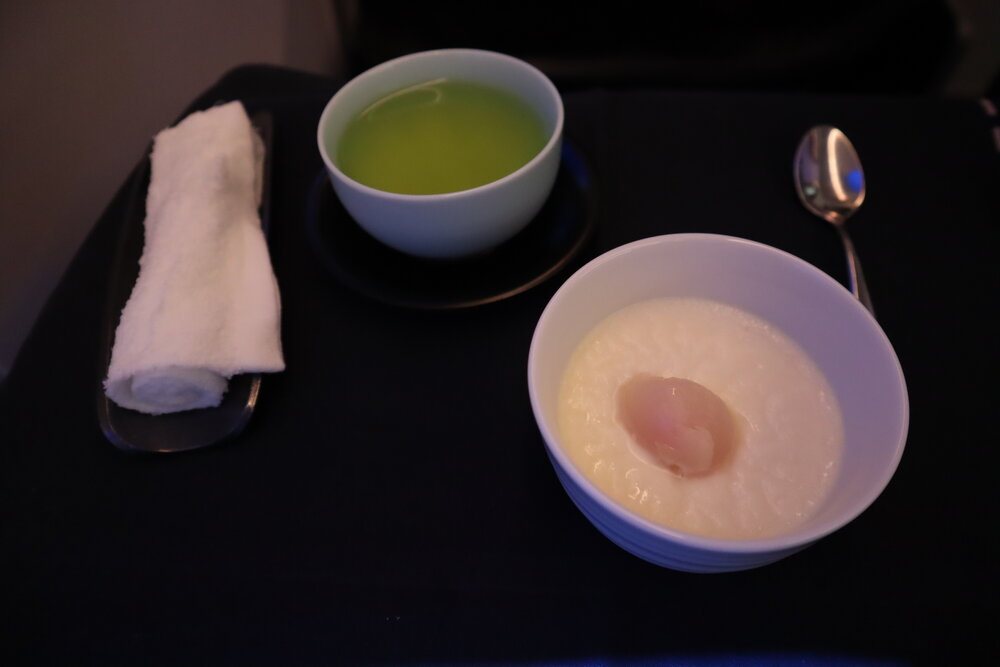
Japan Airlines business class – Lychee pudding
That brought an end to the meal service, which was overall very strong, even if a small handful of the wide variety of flavours on show had fallen flat somewhat.
From my previous flights with them, I got the impression that Japan Airlines certainly takes its business class catering very seriously, and this lunch only reinforced that notion.
During the meal service, I did notice one drawback to this ultra-private seat, which is that there is no way you can get up from the seat while you’re being served a meal (in case you needed to visit the restroom or something)… unless you either ask the flight attendant to remove your plate temporarily and then lift up your tray table, or you slither downwards underneath the table if you’re small enough to do so.
Most other business class seats (including the other non-window seats on this very configuration) allow some form of “exit” while the tray table is down, so this is something to keep in mind about the otherwise excellent Apex Suites.
The service was friendly throughout the meal, although not overtly so, the way that Japanese flight attendants have sometimes come across on my previous flights. The pace of the meal was very efficient as well: there were about 20 minutes in-between each of the amuse bouches, the appetizers, the main course, and the dessert, which was just the right time for me to polish off my food and digest for a few minutes before moving onto the next course.
After the meal service was complete, one of the flight attendants began one of the routine in-flight announcements with “Ladies and gentlemen, did you enjoy your lunch?”, and I thought that was a pleasant touch.
We were flying over Nunavut by this point, making good progress along the Arctic route towards Japan. I briefly brightened up my window shades to snap some overhead pictures of these rarely-witnessed landscapes.
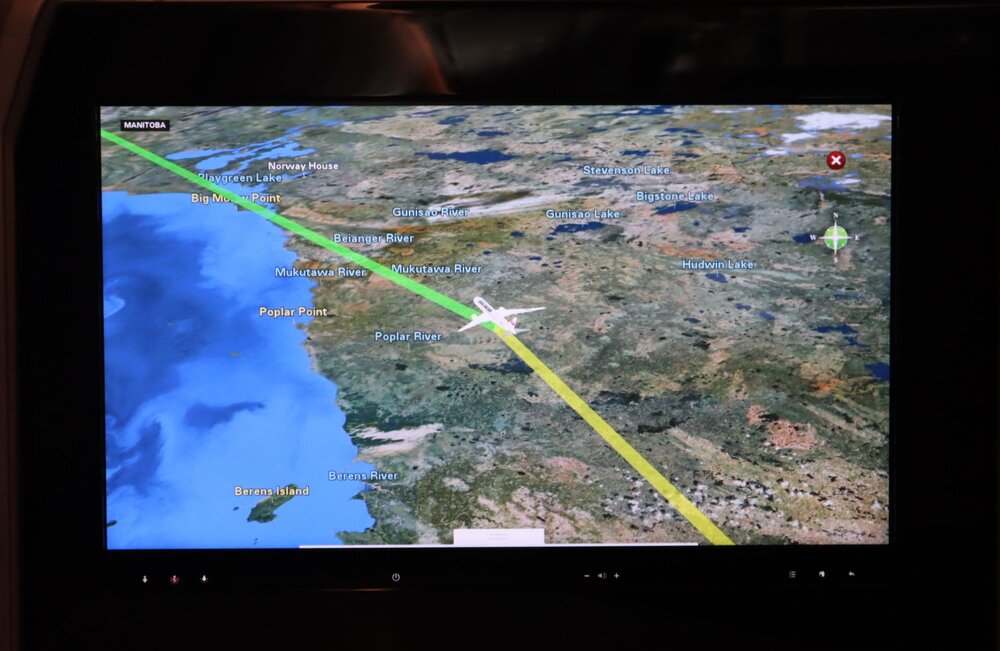
Japan Airlines business class – Airshow en route to Tokyo

Japan Airlines business class – Views of Nunavut
Japan Airlines Business Class – Bed
I paid a visit to the business class restroom, which was just ahead of me in the galley near the cockpit door. It’s relatively cramped quarters here on the limited-space Boeing 787-8, and there’s a small handful of amenities provided in the corner for business class guests.

Japan Airlines business class – Restroom
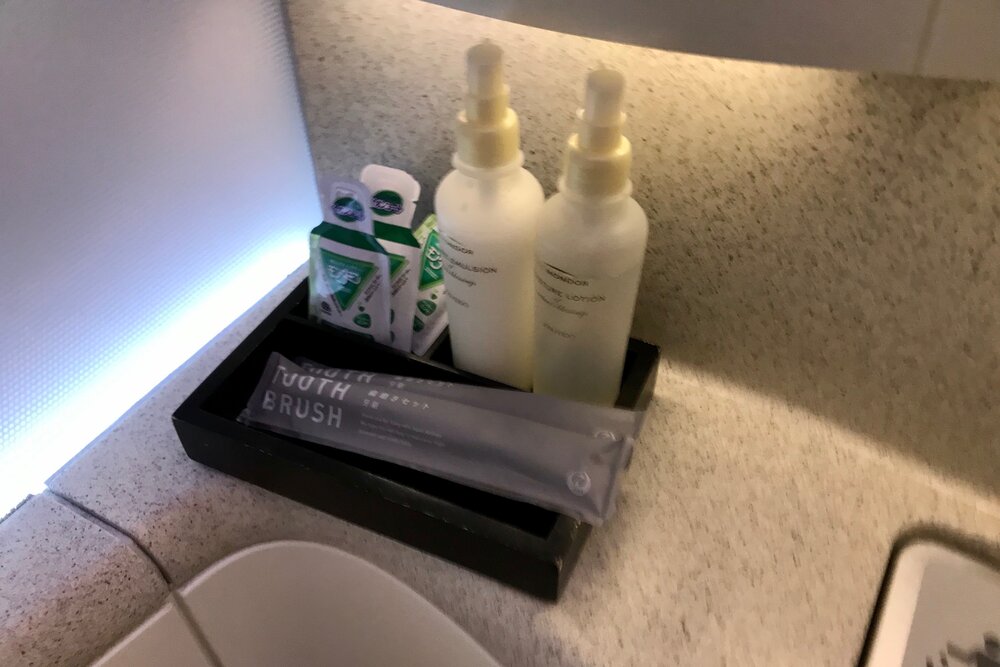
Japan Airlines business class – Restroom amenities
I put the bed in lie-flat mode and fitted it with my pillow and blankets. The Apex Suite may not be the widest business class seat type, but it was certainly comfortable enough for napping, and the ample legroom on the ottoman was very much appreciated as well.
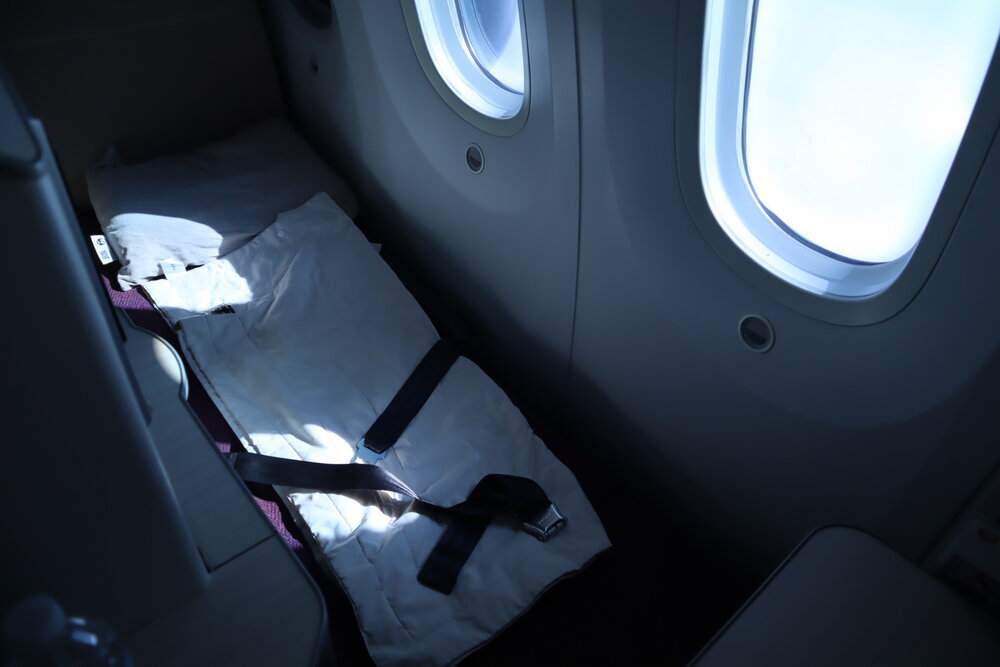
Japan Airlines business class – Lie-flat bed
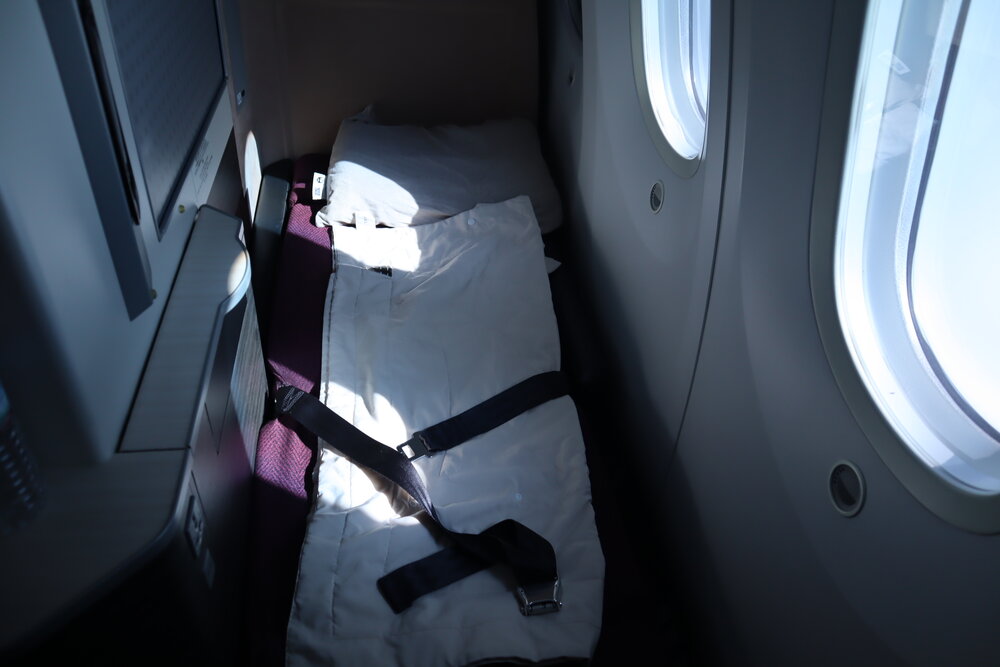
Japan Airlines business class – Lie-flat bed
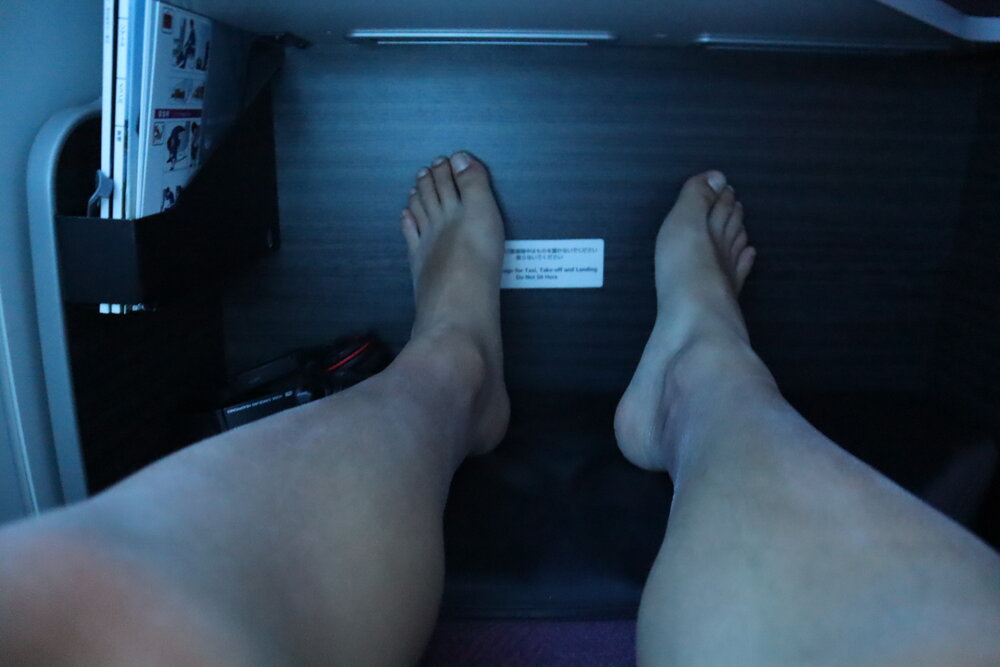
Japan Airlines business class – Legroom
I set an alarm on my iPhone to go off in two and a half hours, since I only wanted to nap briefly and then continue enjoying the rest of the flight.
Sure enough, I awoke with about four hours of the flight left to go, as we were just overflying the Russian Far East.
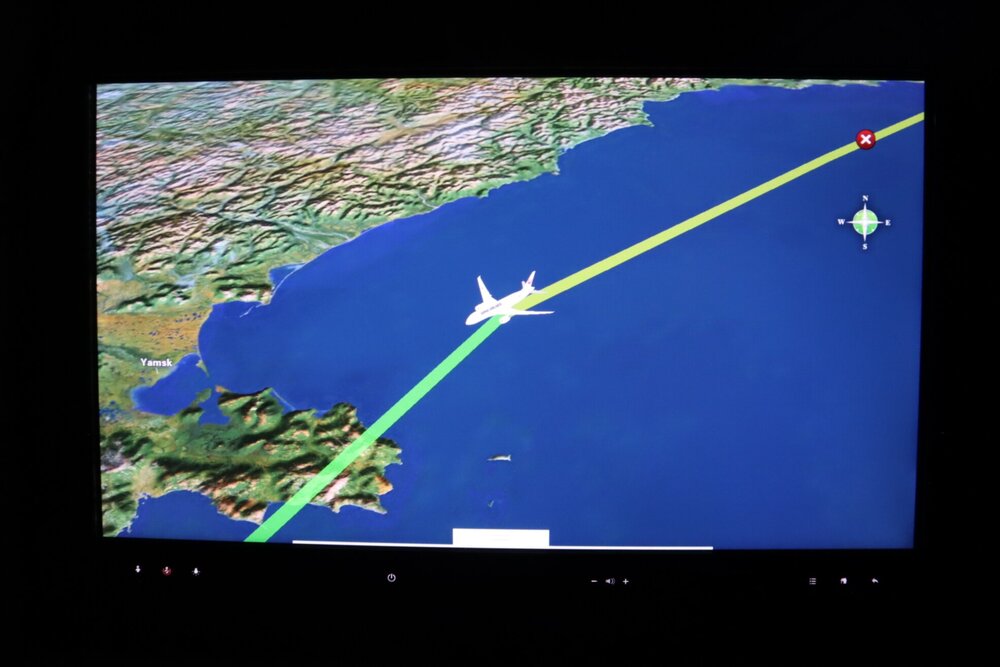
Japan Airlines business class – Airshow en route to Tokyo
Japan Airlines Business Class – WiFi
Since this was a daytime flight, I intended to use the time onboard productively, so I connected to the wifi. Business class passengers don’t receive complimentary wifi here on Japan Airlines; instead, I purchased a 24-hour pass for US$16.80.
On the plus side, there are no data transmission limits, so even though free wifi would’ve been nice, I didn’t think the price point was too excessive. However, I was frustrated that the wifi was continually dropping throughout the flight, and I’d have to reconnect every 20 minutes or so to keep on using it.
I continued working, until we were flying over the snow-capped mountains of the Canadian Arctic.
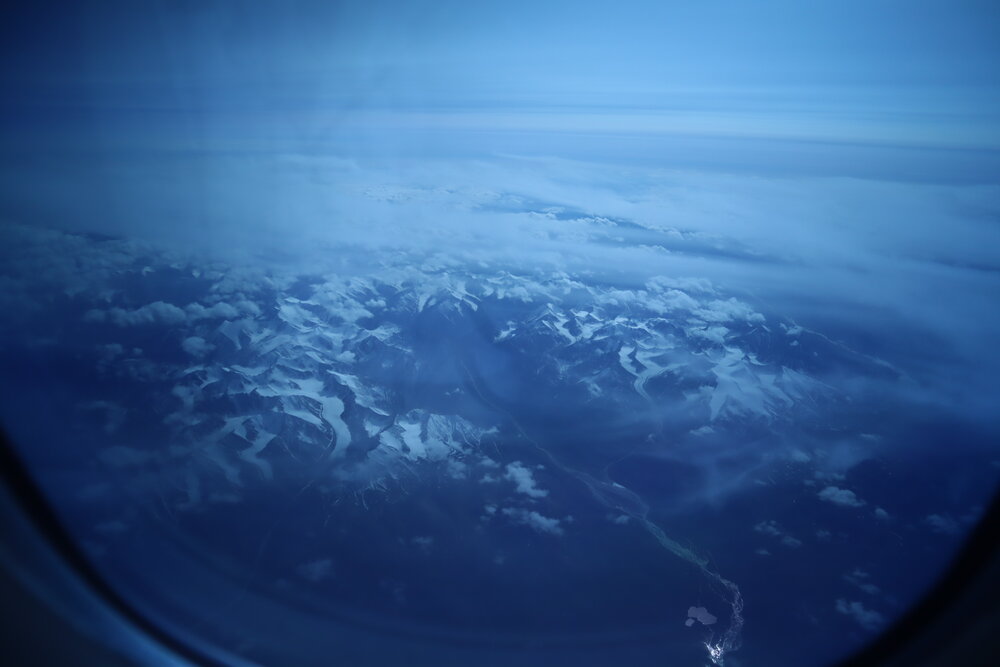
Japan Airlines business class – Views of Canadian Arctic
It’s worth noting that the wifi satellite signal was offline the entire time we were flying over Russia, and didn’t reconnect until we were flying over Japan several hours later.
That made the US$16.80 that I paid for wifi seem like less good of a deal, and it’s something to keep in mind if you intend to use the wifi to work onboard Japan Airlines flights that fly along the Arctic route over Russia.
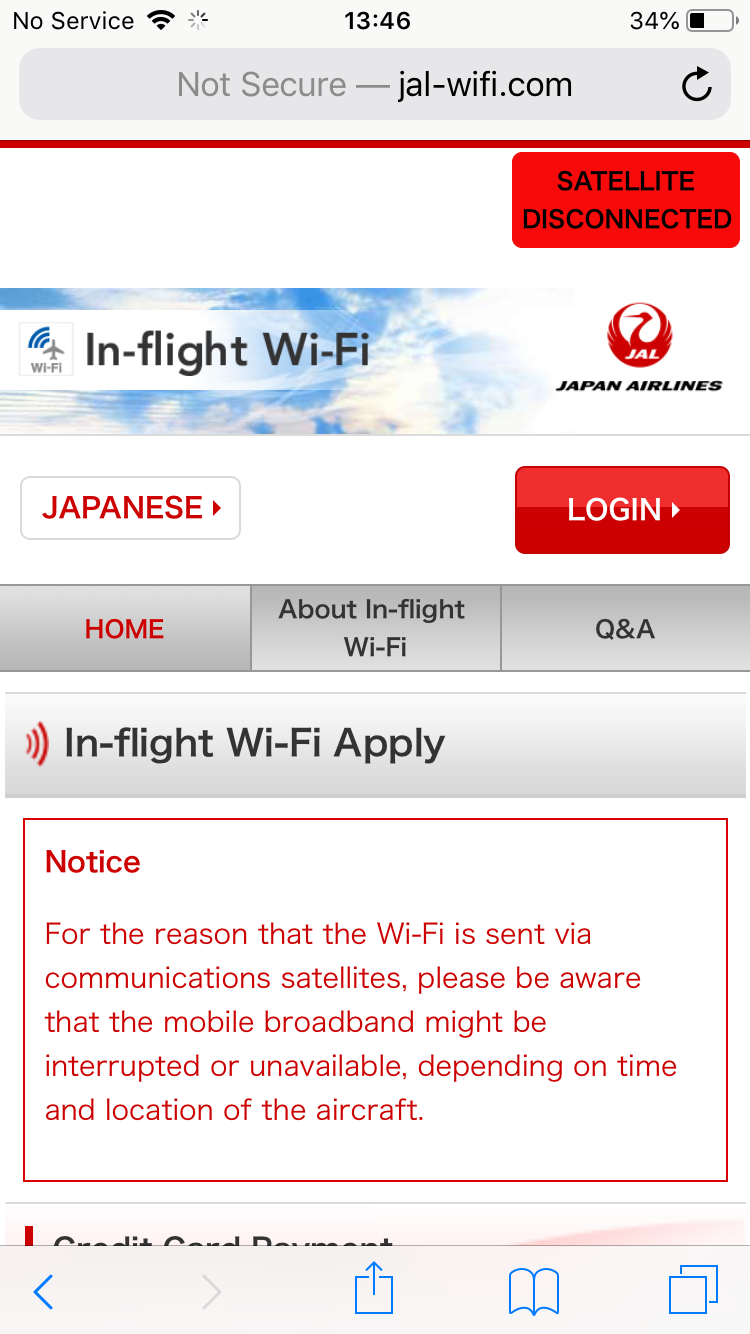
Japan Airlines Business Class – Snack Service
I worked for about two hours before deciding that it was time to hit up the “Anytime You Like” snack menu. As a huge fan of all kinds of Japanese food, from ramen to udon and everything in between, I find that the snack menu is one of my absolute favourite things about flying on Japanese airlines, so I intended to maximize this one as much as I could.
I began with a bowl of the JAL Original Healthy Ramen from Kyushu. The menu promises a strong umami flavour (and even clarifies what exactly umami is, for those who aren’t familiar) based off of a vegetable stock rather than the customary pork- or chicken-based broth, which really piqued my curiosity.

Japan Airlines business class – JAL Original Healthy Ramen
There was no mistake: it turned out to be very umami-like indeed, and I enjoyed every last bite, alongside a glass of the kiwi-flavoured JAL Original Drink.
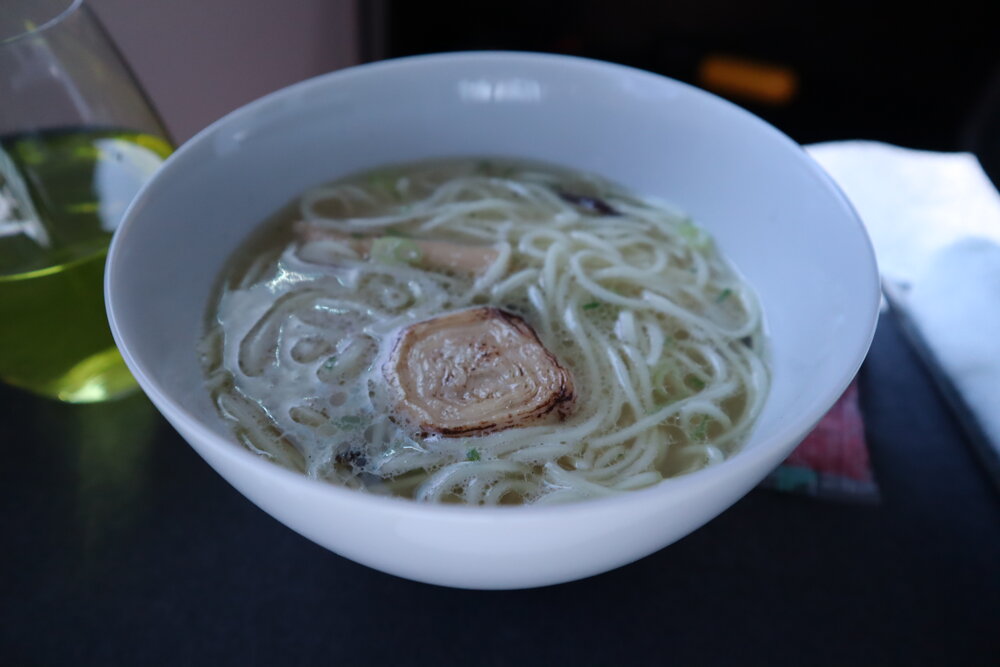
Japan Airlines business class – JAL Original Healthy Ramen
There was no mistake: it turned out to be very umami-like indeed, and I enjoyed every last bite, alongside a glass of the kiwi-flavoured JAL Original Drink.
Soon after, I continued along the snack menu with a helping of the soy-simmered beef rice bowl, and another glass of the kiwi drink. While the rice bowl tasted a little bland at first, the flavour got better when I gave everything a good mix, and I ended up enjoying it quite a bit as well.
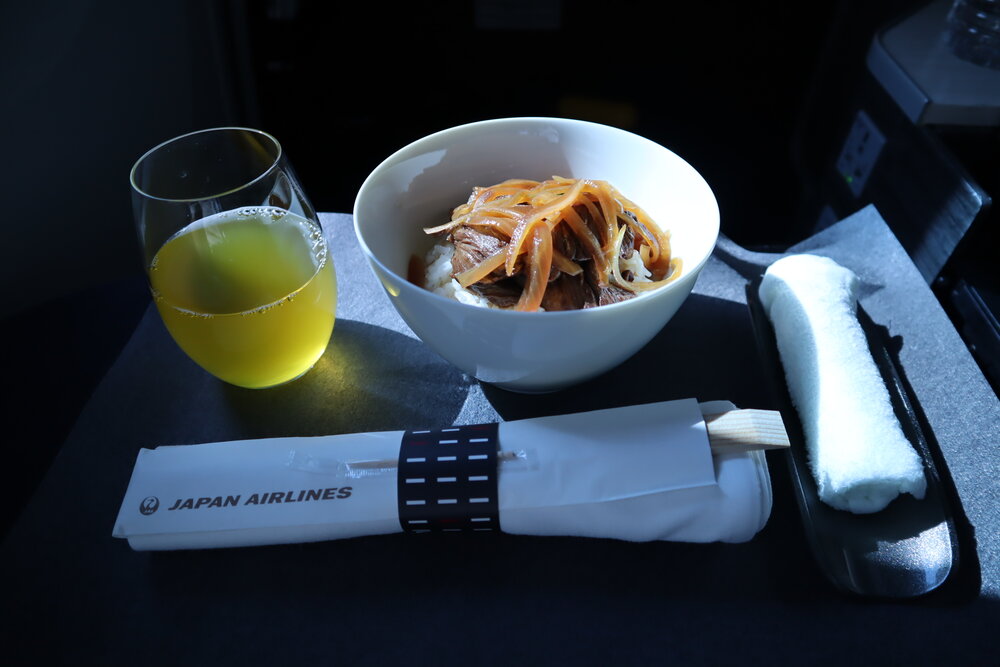
Japan Airlines business class – Soy-simmered beef rice bowl
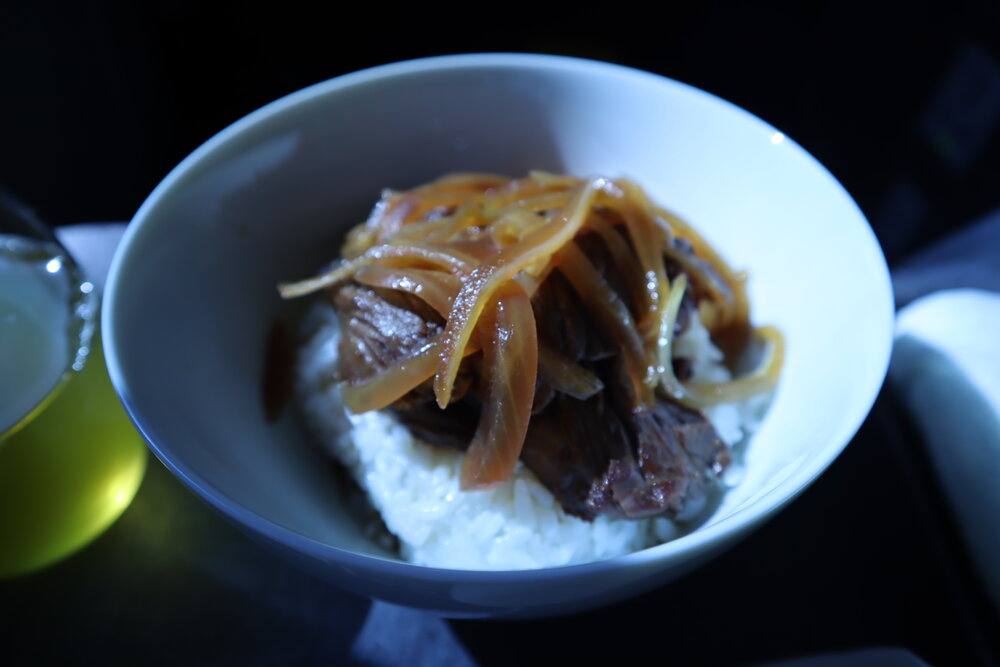
Japan Airlines business class – Soy-simmered beef rice bowl
After finishing up my rice bowl, I decided I wanted to nap for a little bit. Jessy was half-asleep watching a movie in the seat beside me, and most of the other passengers seemed to be resting as well.
Soon enough, it was time to indulge in the one snack item that I had truly had my eye on this whole time: the udon noodles.
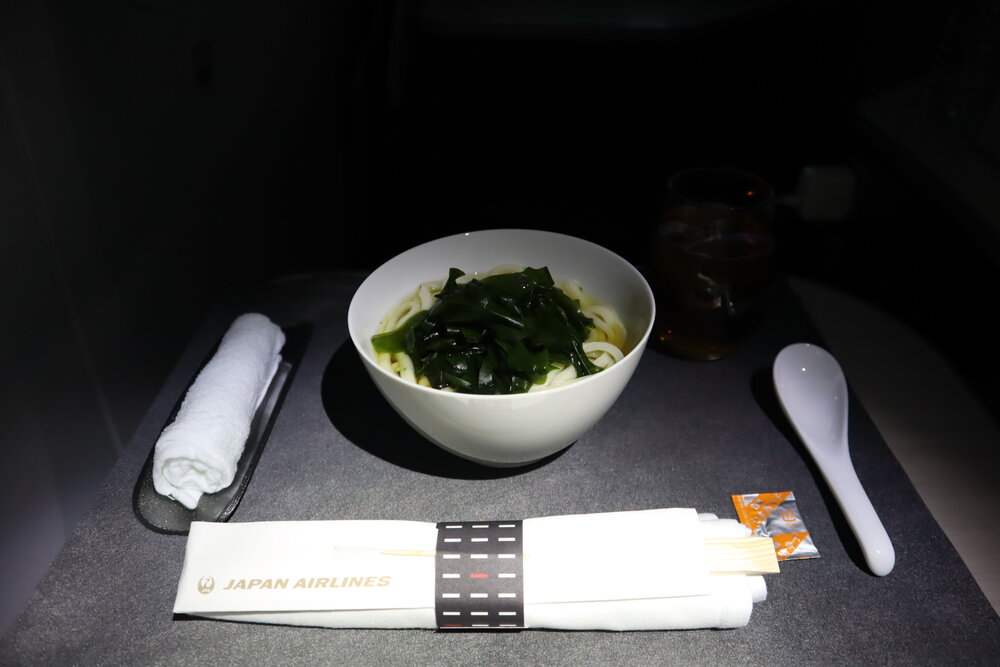
Japan Airlines business class – Udon noodles
It was a delicious bowl of incredibly tender noodles served in a broth that was just the right saltiness. I was so enthusiastic about it when I returned the plate to the flight attendant, that she later returned asking me if I wanted another bowl.
I was quite self-conscious about how much food I had consumed by this point, but I simply could not resist, and agreed to have my second bowl of udon – and fourth snack item overall – alongside a glass of iced oolong tea.
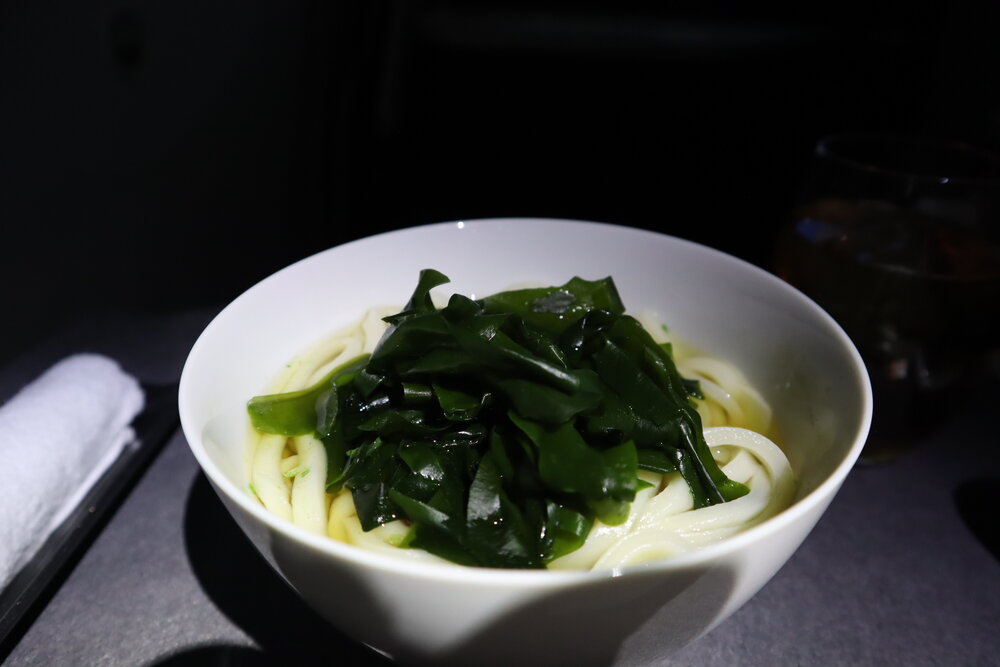
Japan Airlines business class – Udon noodles

Japan Airlines business class – Iced oolong tea
(It’s worth noting that the crews seemed to have changed shifts by the time I woke up, and the second flight attendant taking care of me was much more chipper and bubbly than the first, and checked up on me a lot more frequently as well.)
I worked offline for another little while, before ordering my fifth and final snack: a box of Häagen-Dazs ice cream.

Japan Airlines business class – Häagen-Dazs ice cream
With about two hours of the flight remaining, I got up to stretch my legs a little bit (and also to work off some of the food I had been shovelling into my mouth). I passed by the self-serve snack bar that the crew had set up in the galley, but of course, I couldn’t bring myself to eat any more snacks by this point.
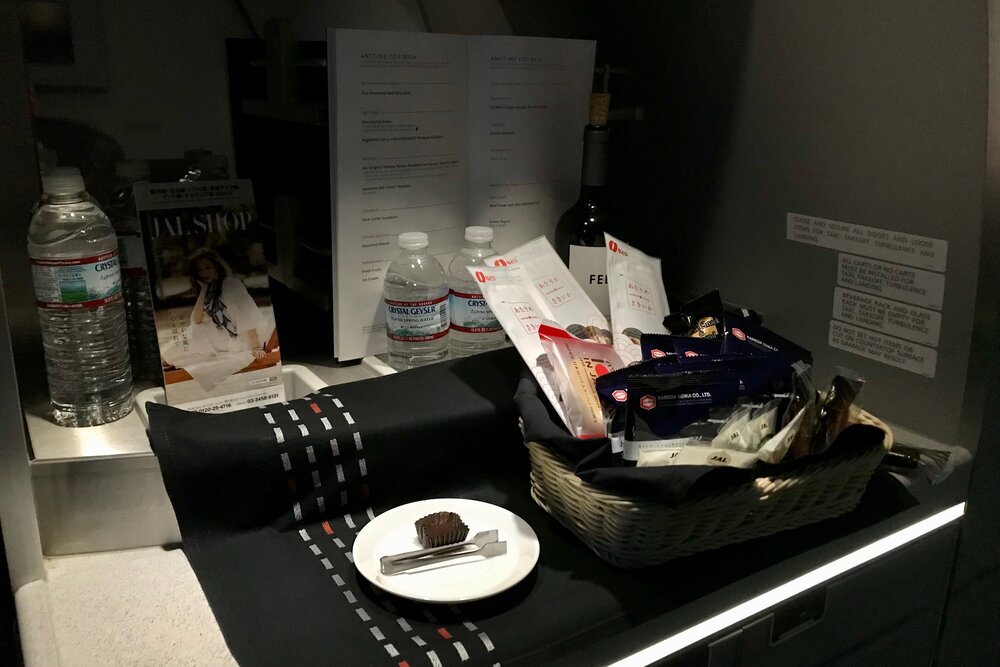
Japan Airlines business class – Snack station
Wifi was restored by this point, so I managed to reconnect. After half an hour, though, the flight attendant came by to let me know that the pre-arrival meal was being served, and asked if I wanted the Japanese or the Western option.
I would’ve been perfectly fine skipping this meal (and to be honest, my body probably would’ve thanked me for it), but hey, I wanted to do it for the review, so I opted for the Japanese set plate.
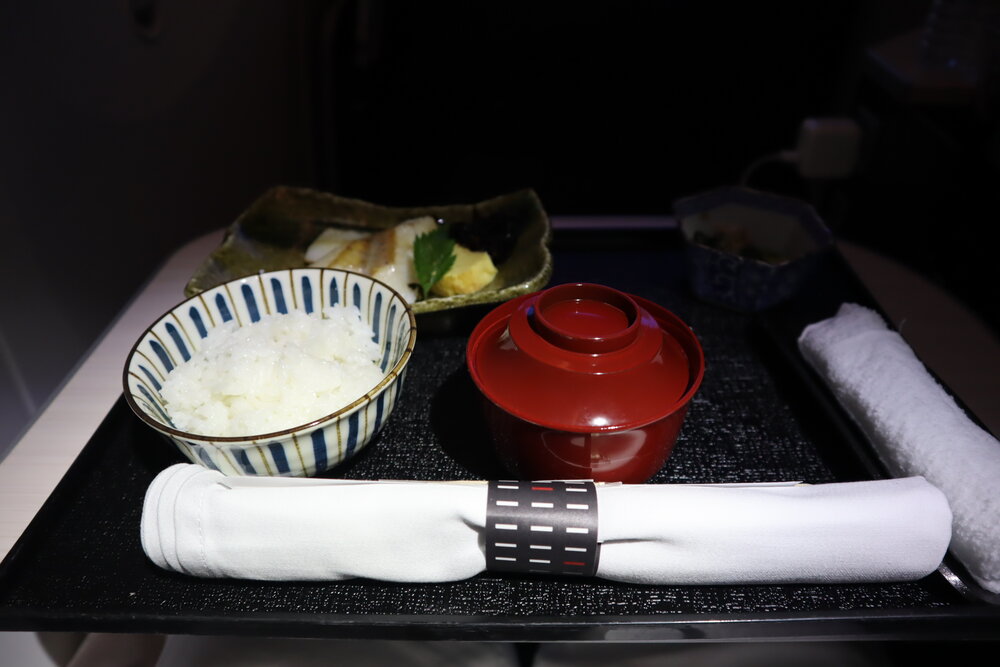
Japan Airlines business class – Pre-arrival meal
This was a much simpler meal presentation than the first, consisting of a few savoury bites of some grilled fish and boiled spinach, served with rice and miso soup. You can’t really go wrong with this stuff, and the lightly salty flavours were a great way to finish off the full-fledged gastronomic experience I had chosen for myself on this flight.
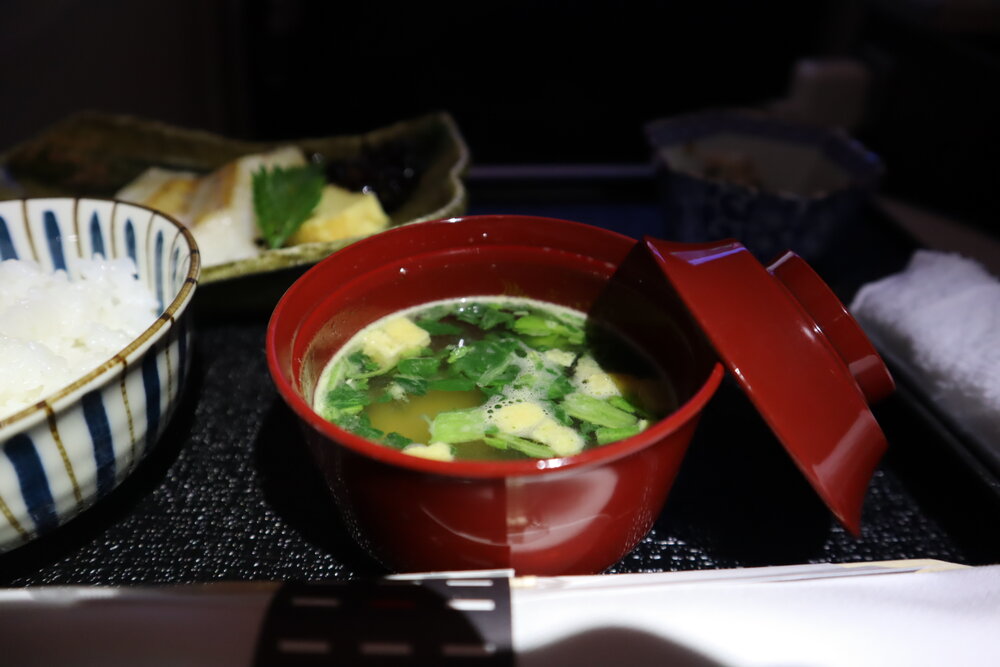
Japan Airlines business class – Miso soup
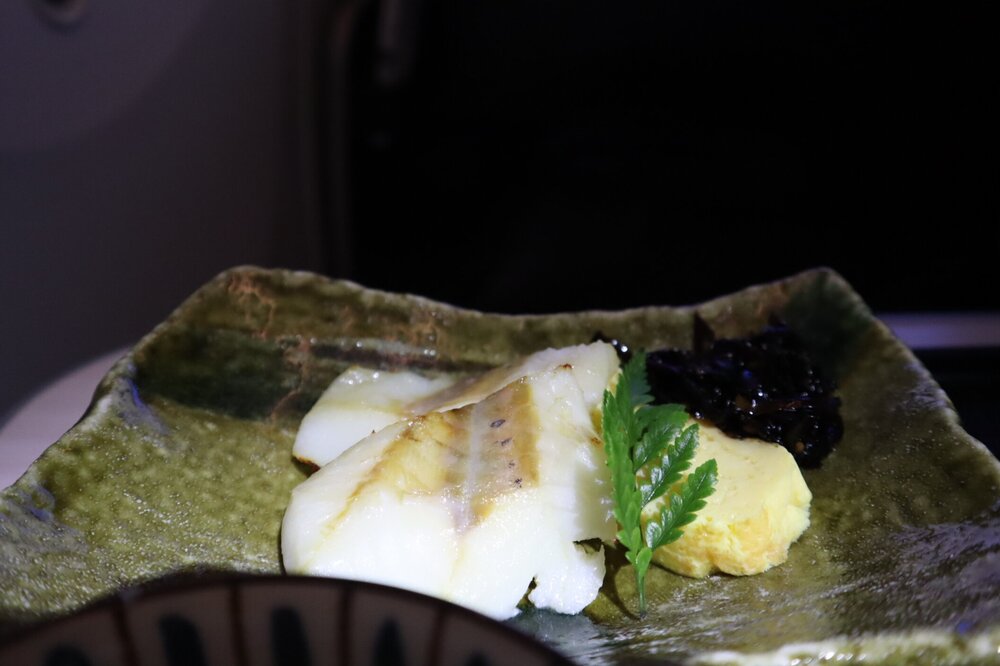
Japan Airlines business class – Grilled fish
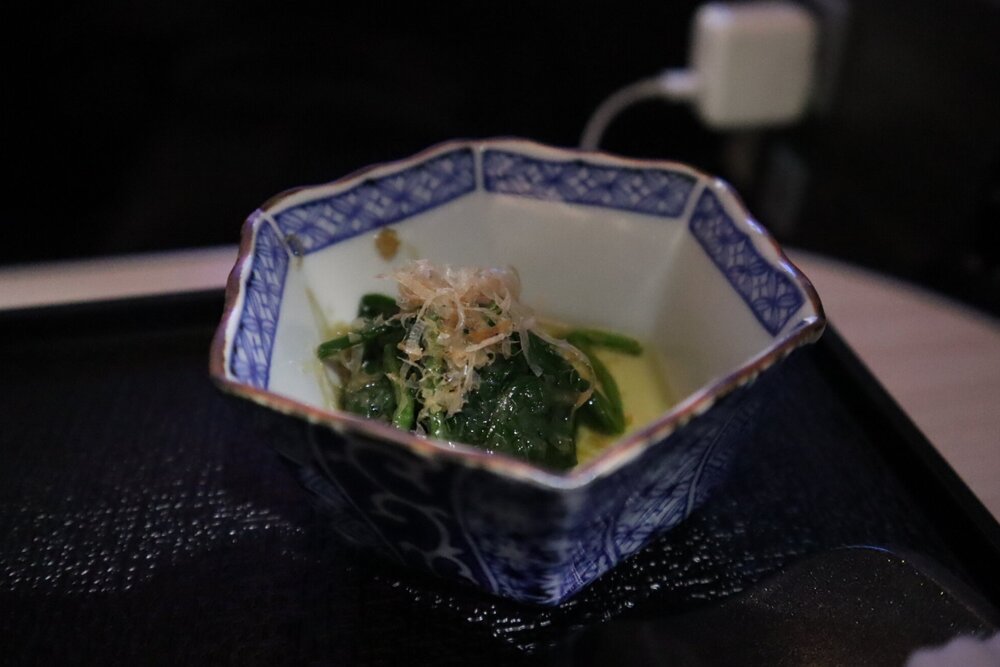
Japan Airlines business class – Boiled spinach
My tray was very efficiently withdrawn as soon as I was done, and the crew also relaxed their insistence on keeping a dark cabin as we began our descent, allowing me to finally take in some uninterrupted window views over the Japanese countryside as we approached Narita Airport.
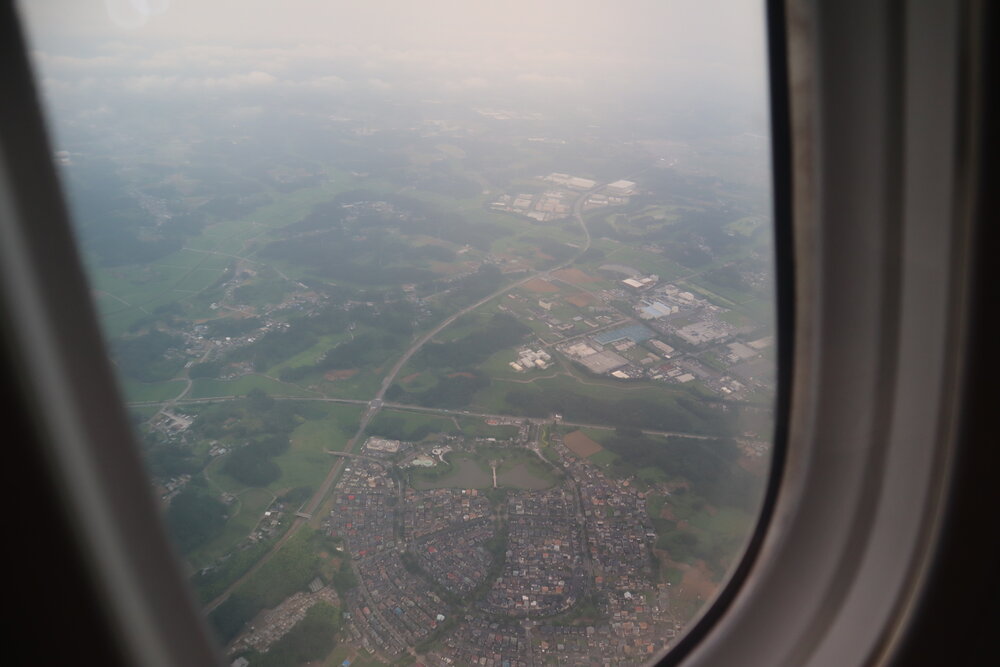
Japan Airlines business class – Views on approach to Tokyo
A smooth touchdown brought an end to the highly enjoyable 12 hours we had spent onboard Japan Airlines 787 business class, and Jessy and I soon made our way through Japanese immigration and then onto the transfer bus over to Narita’s domestic terminal, where we’d catch our next flight to Osaka Itami in a few hours’ time.
Conclusion
My maiden long-haul flight onboard Japan Airlines’s 787 Apex Suites service was one of my best all-round business class experiences in recent memory.
The Apex Suites are widely regarded as one of the leading business class seats in the world, especially if you can snag a window seat, and my experience in Seat 1A fully backs up this assessment. Besides the one minor flaw that you can’t leave your seat when the tray table is down, the window seat is an absolute oasis of privacy, and if it weren’t for the relative lack of width, you’d almost be forgiven for thinking you were sitting in a First Class suite.
Since this was a daytime flight, I also got to stay up for most of it, use my time productively, get a little bit of rest, and also maximize my enjoyment of JAL’s extensive “Anytime You Like” snack menu to the very extreme, which left me feeling extremely satisfied (if not over-satisfied) by the time we landed in Tokyo.
With a journey on this product costing as little as 60,000 Alaska miles one-way, it truly ranks up there as one of the best business class options for travelling to and from Asia, and I can’t wait for the next time I get to cozy up in one of JAL’s Apex Suites cocoons by the windows.









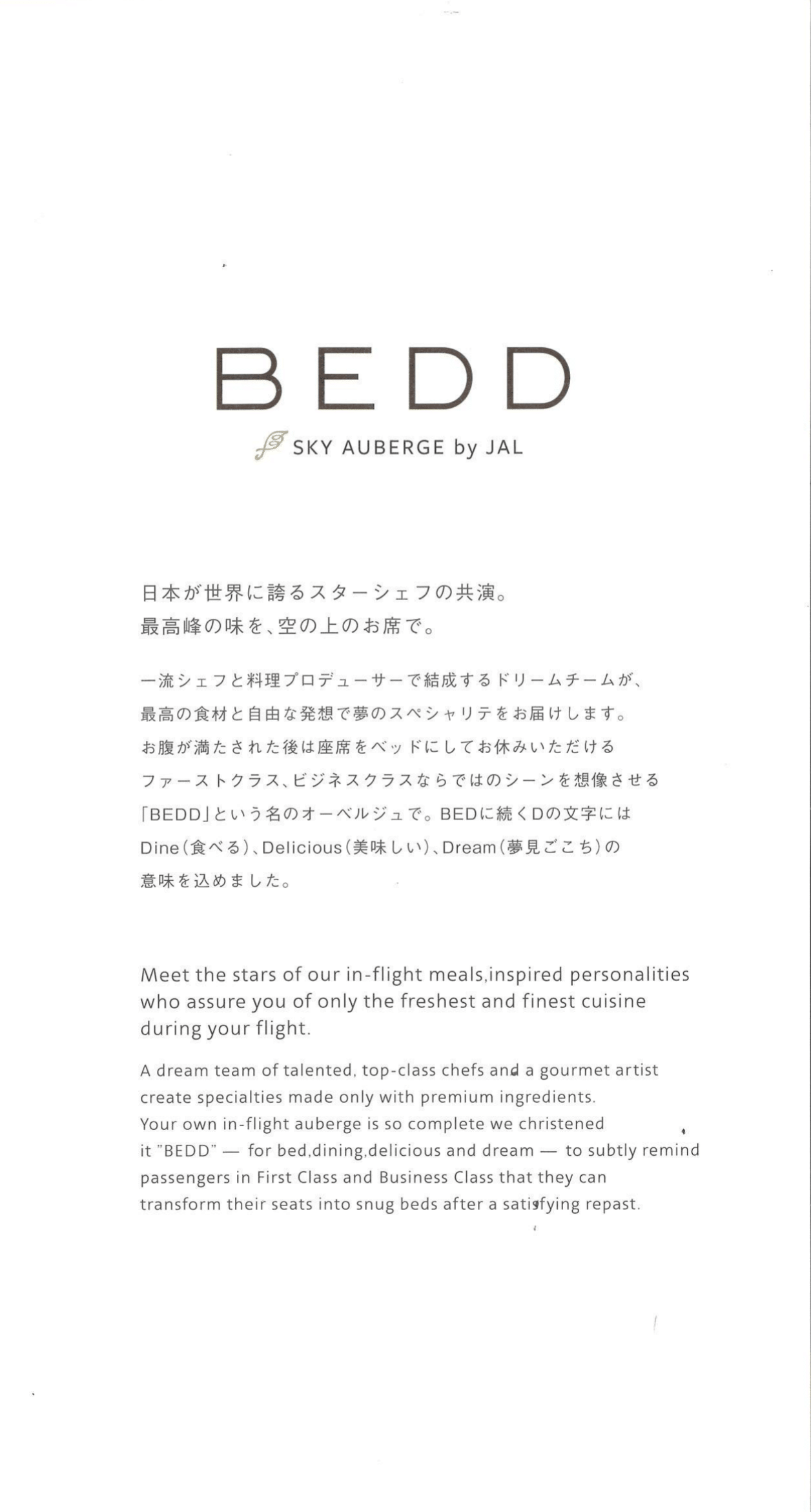
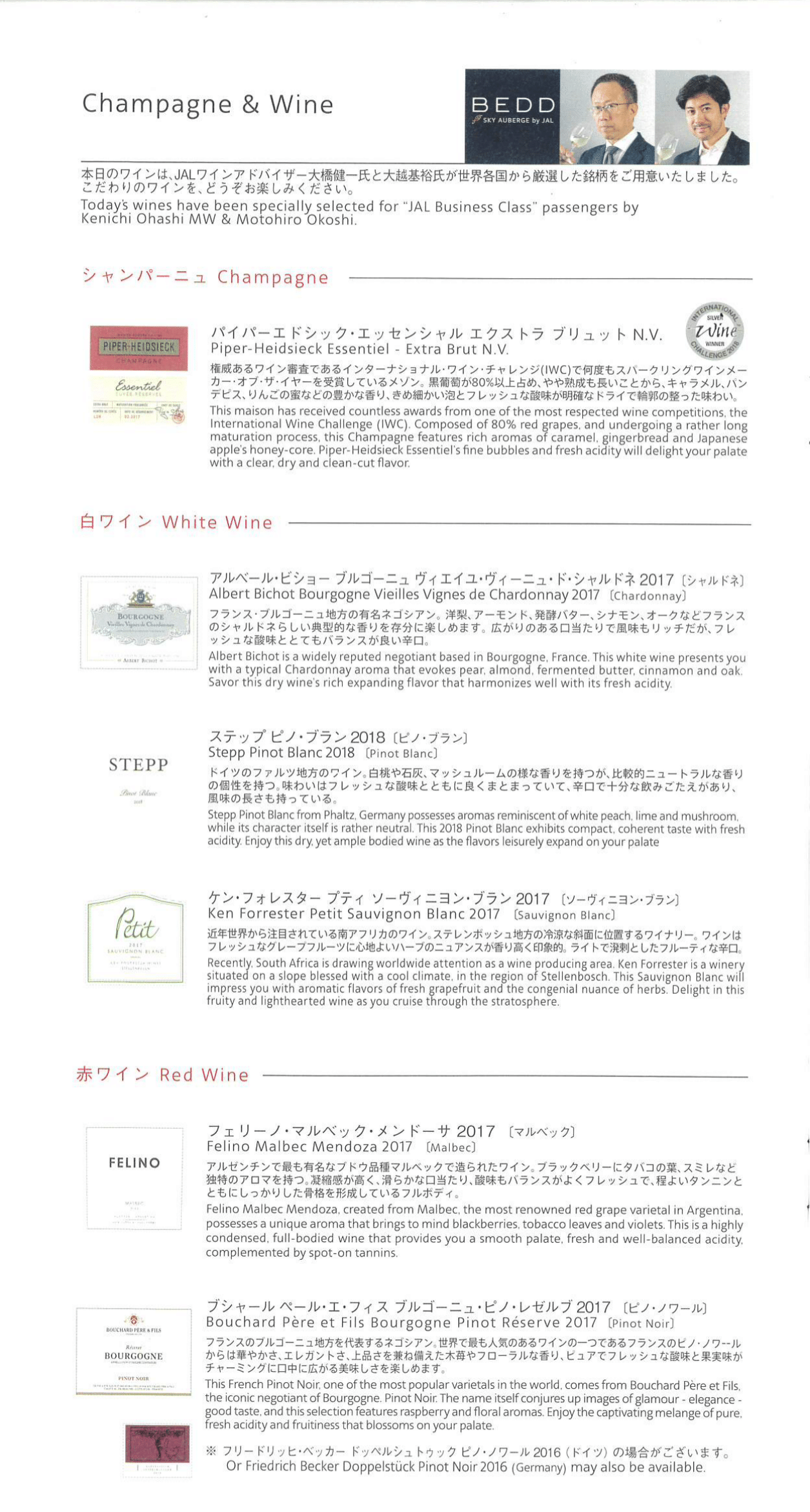
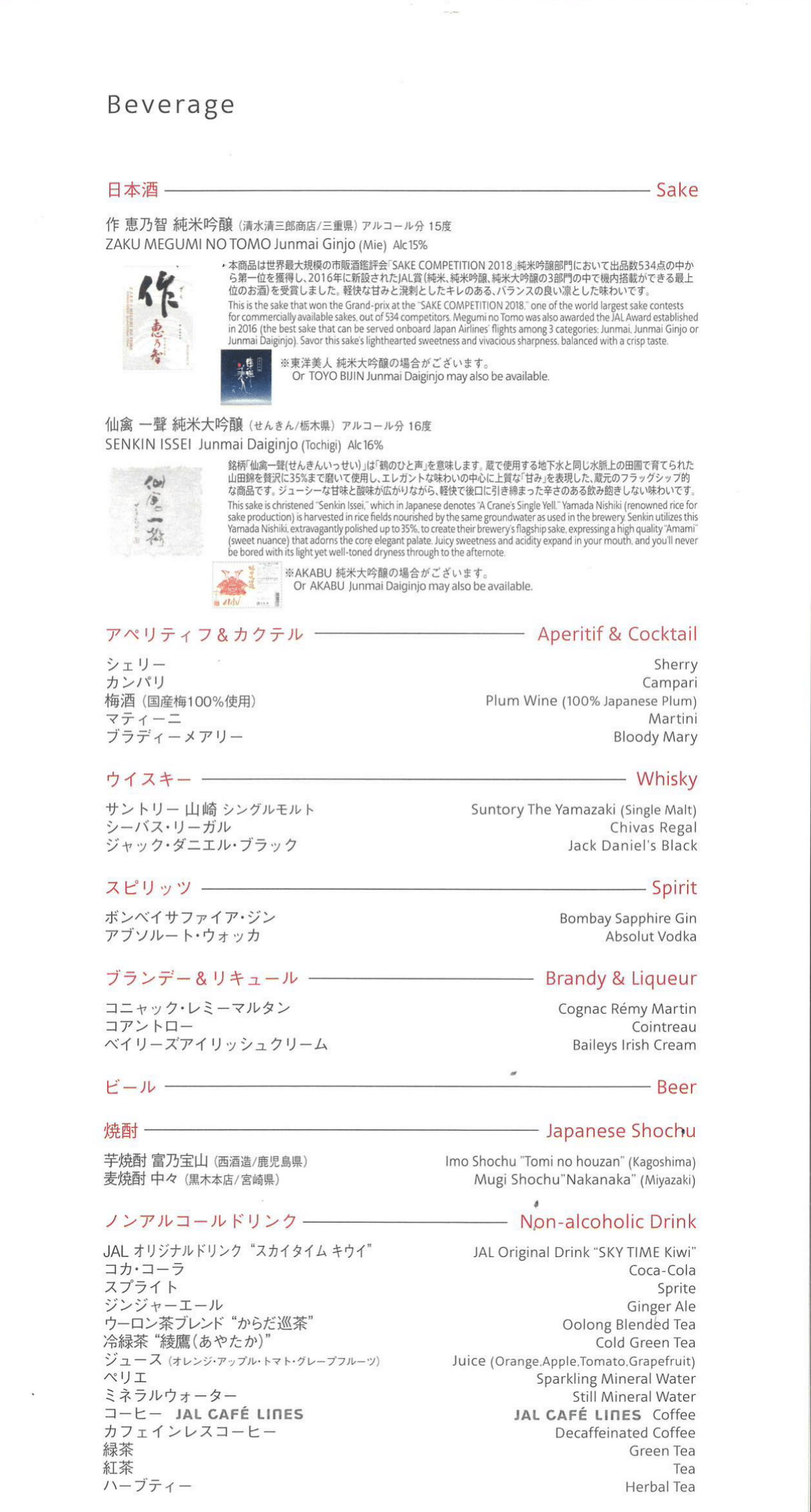
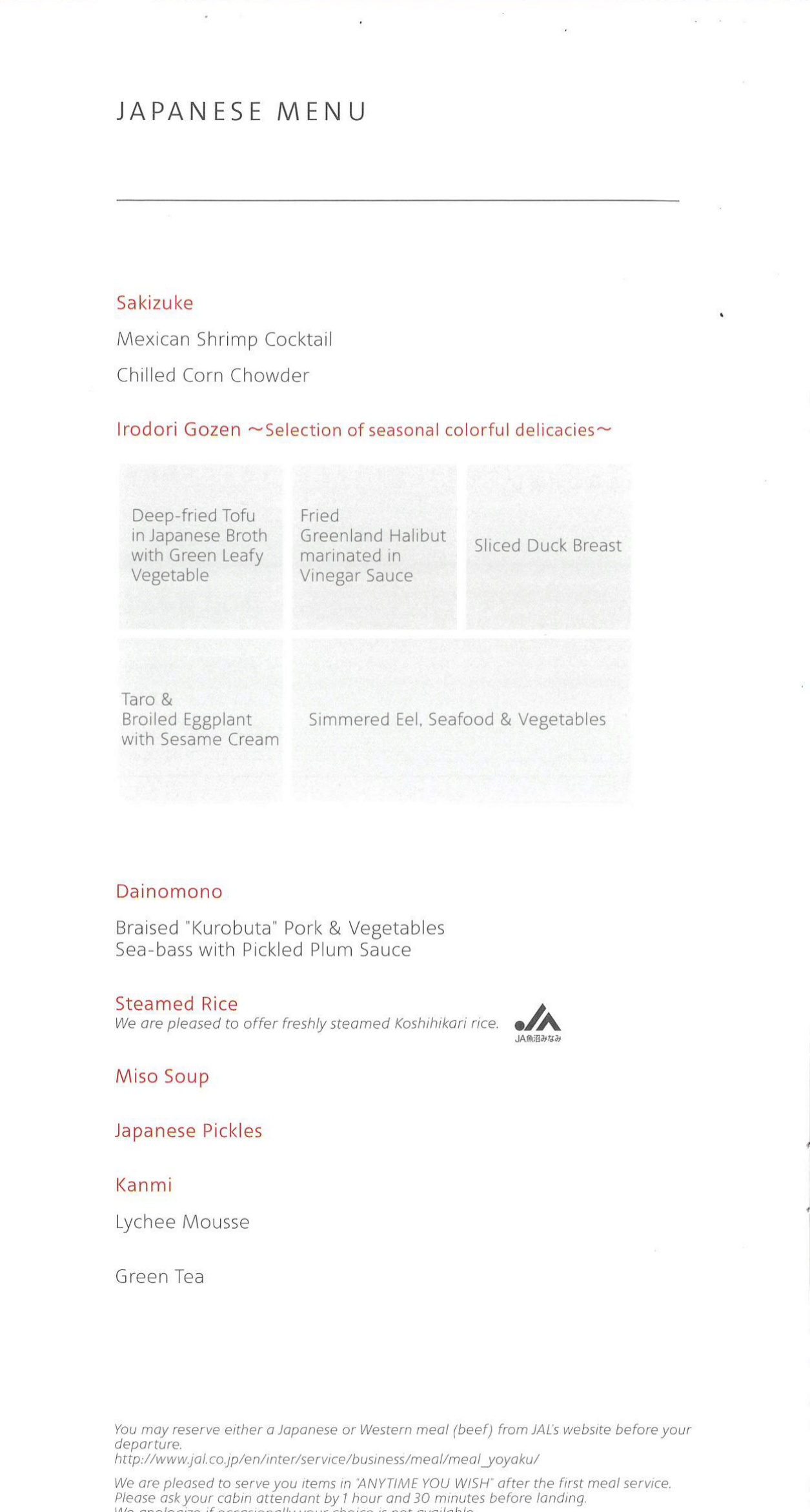

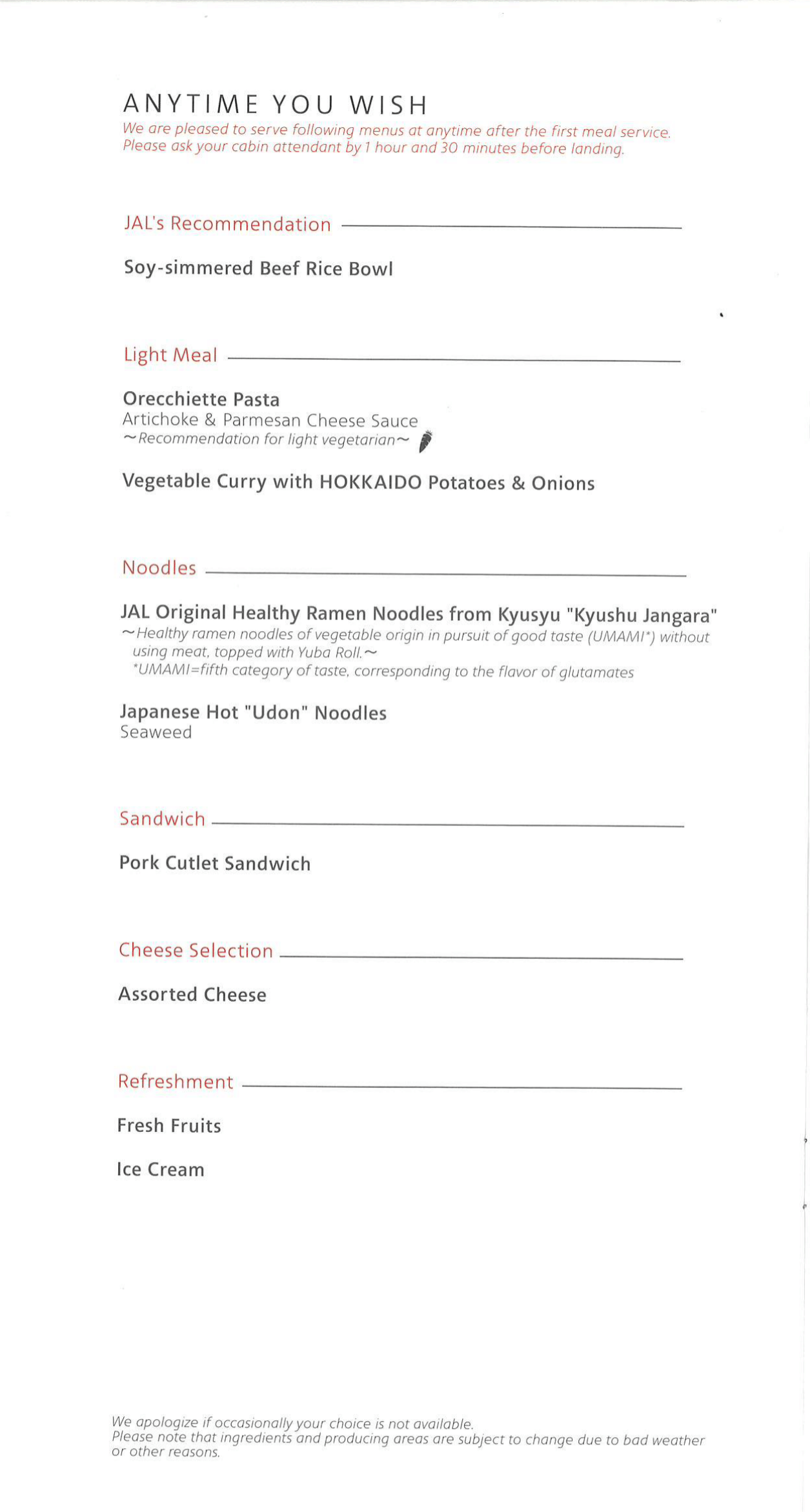
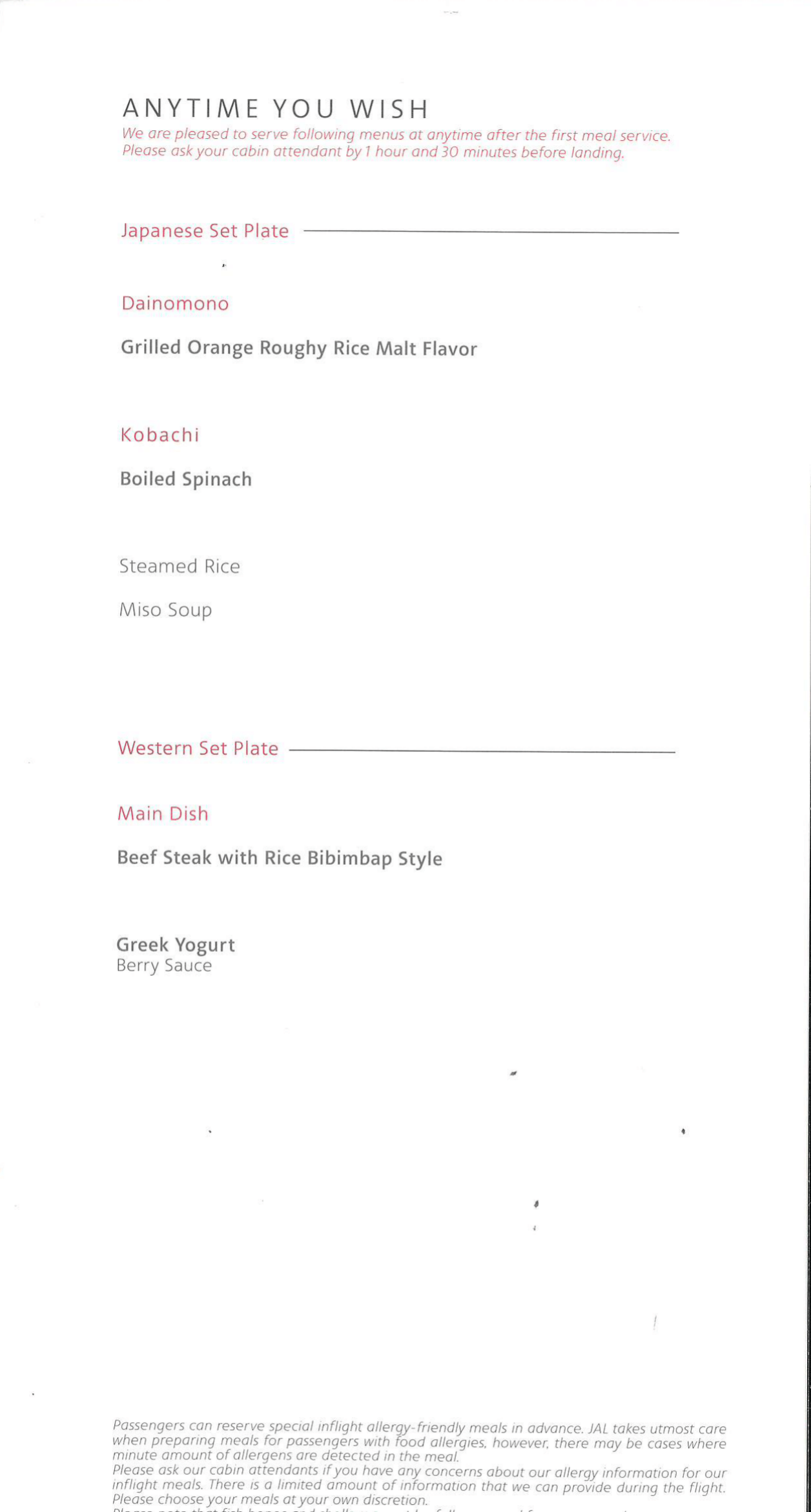

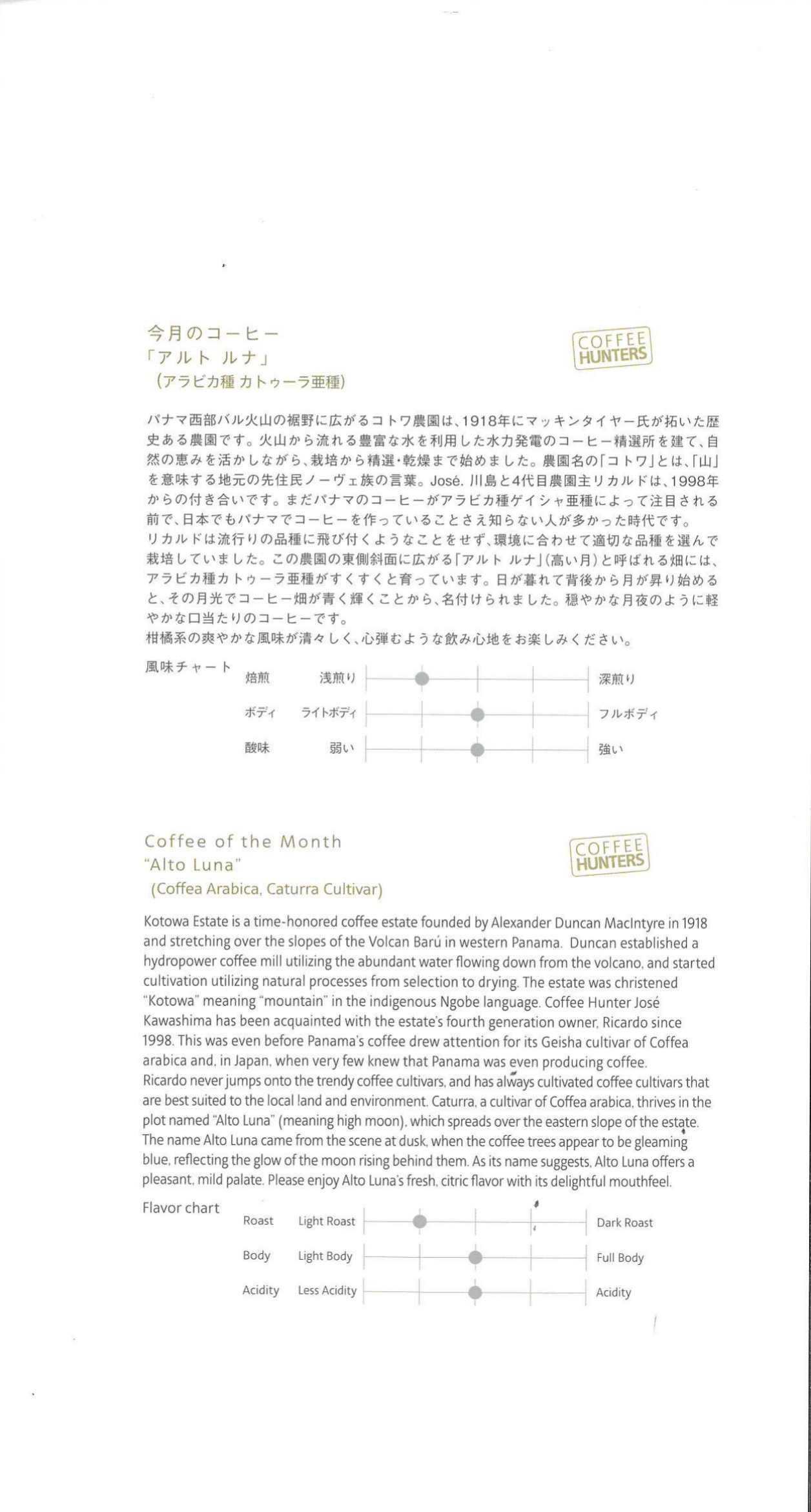
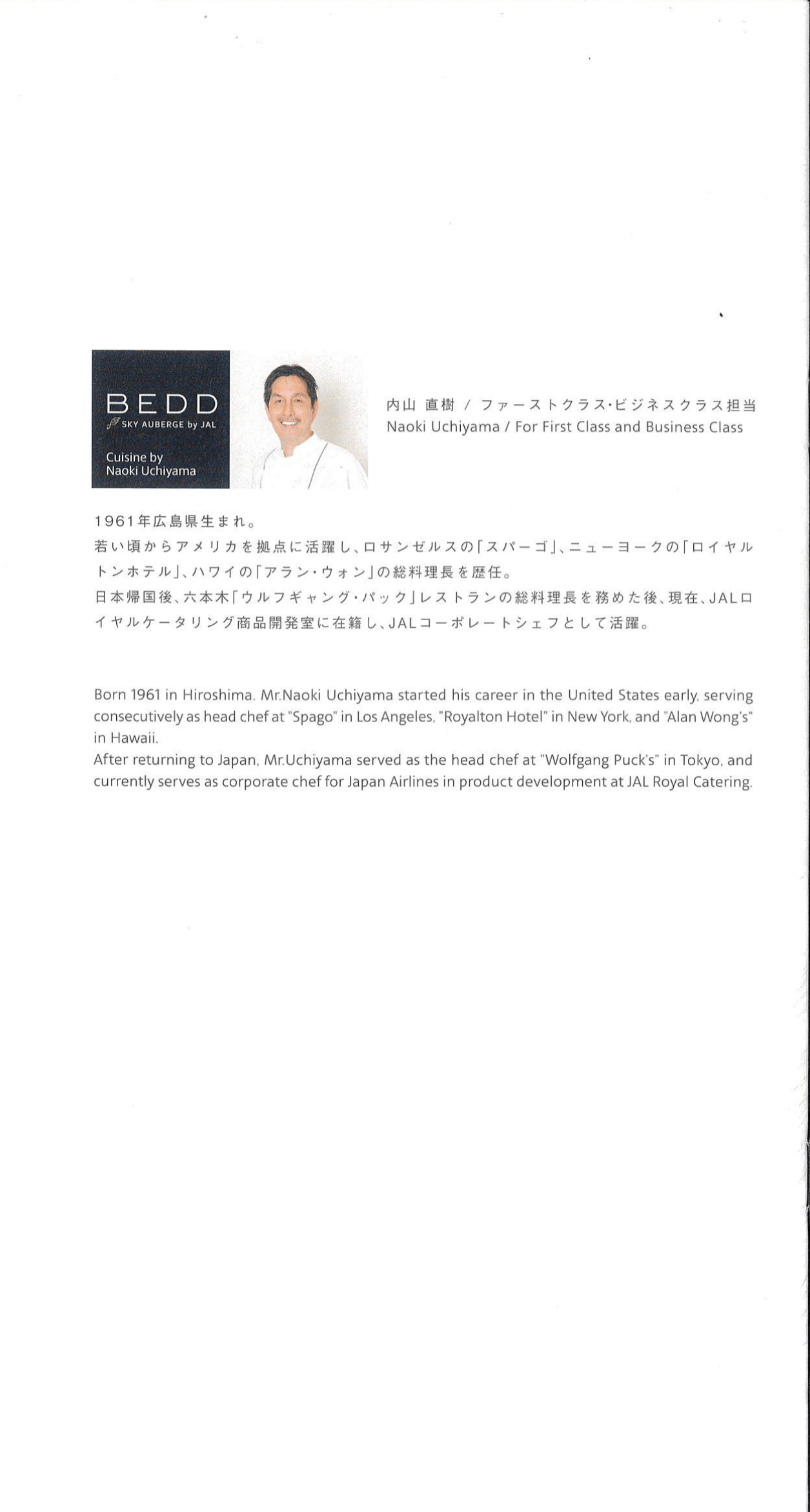

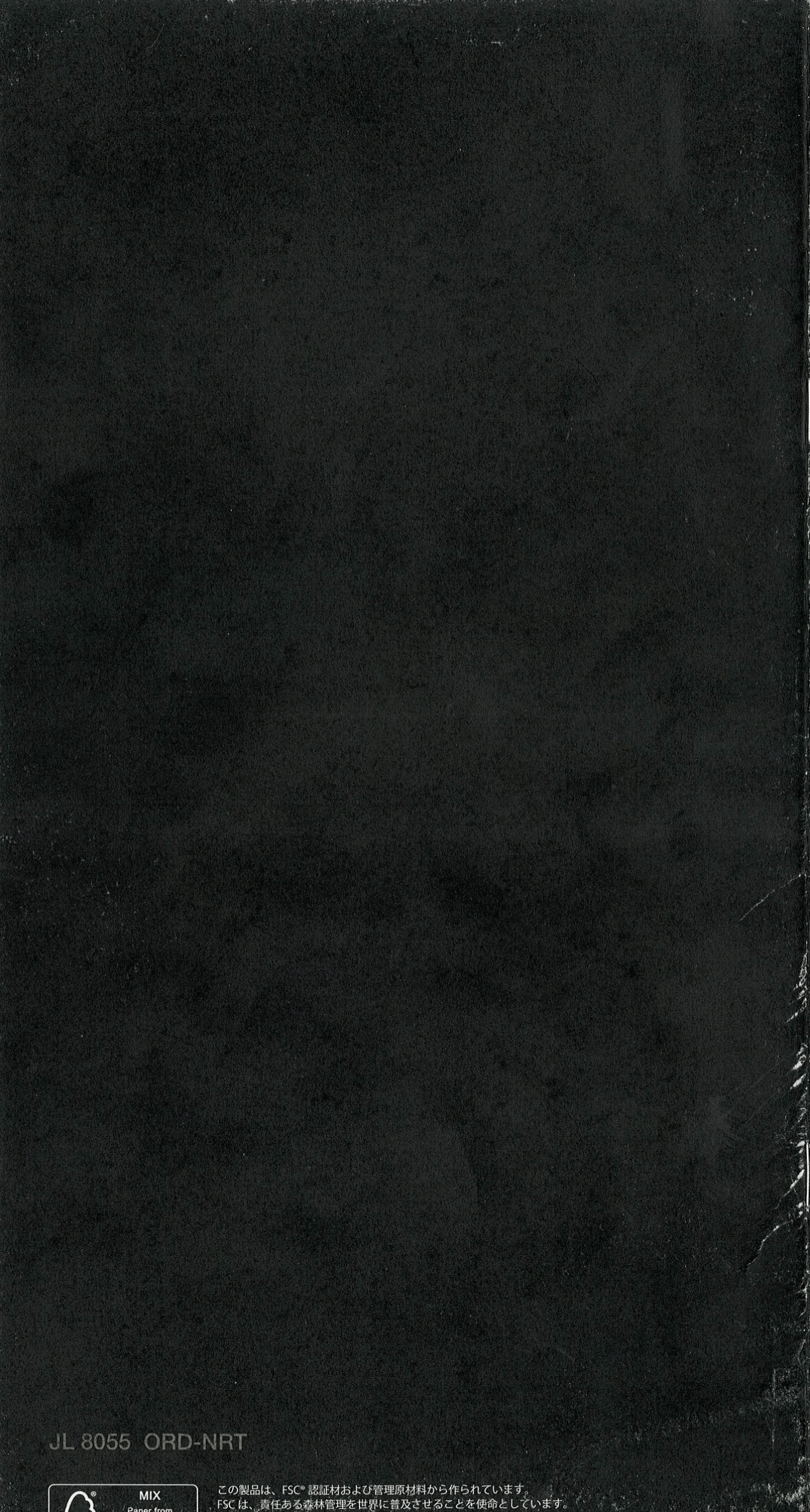














I learned, rather late unfortunately, on my Korean Air flight that has the same hard product, that the fold out table swivels so you can get out during dinner service if you need to.
According to OMAAT, as of March 29,2020, this flight will move to Haneda on B777-300ER. And then in 2021 they will add a second frequency to Narita.
How far in advance did you have to make the booking? I’m in the process of collecting points right now (granted this trip won’t be till a while due to various commitments so taking a risk assuming this flight or other business/first class sweet spot to Japan/Korea is available when I do go) and did some scouting on availability for summer and it might be because of the Olympics 2020 but it was difficult finding two seats in business class in JAL from Chicago to Tokyo. A lot of the time it would be showing mixed cabin seats with a connecting flight at Dallas (and the flight TO Japan won’t be business).
How was the temperature in the cabin? JAL has a rep for keeping the temp higher and on about 50% of my flights with them, it has been on the warm side.
Pretty warm, I napped without the blankets on and still felt very cozy.